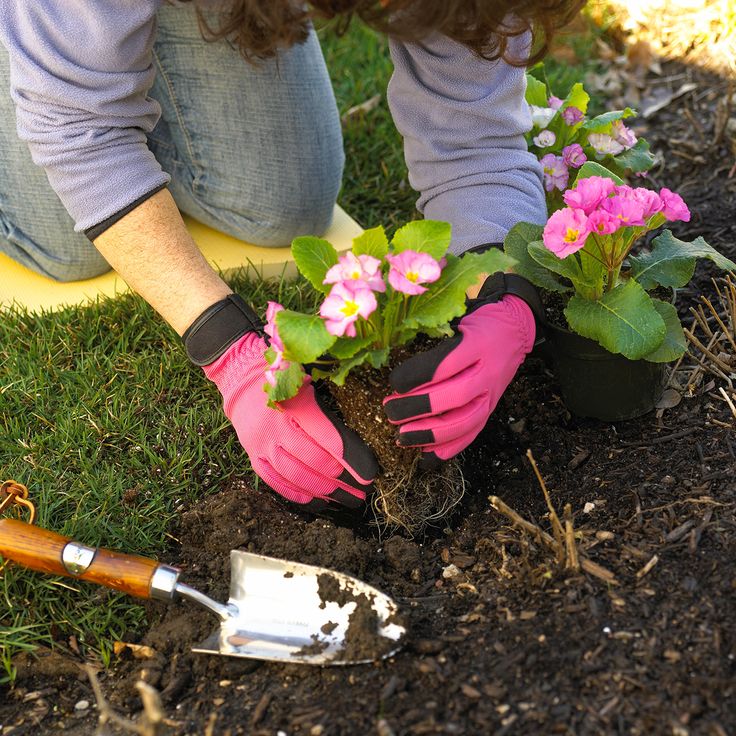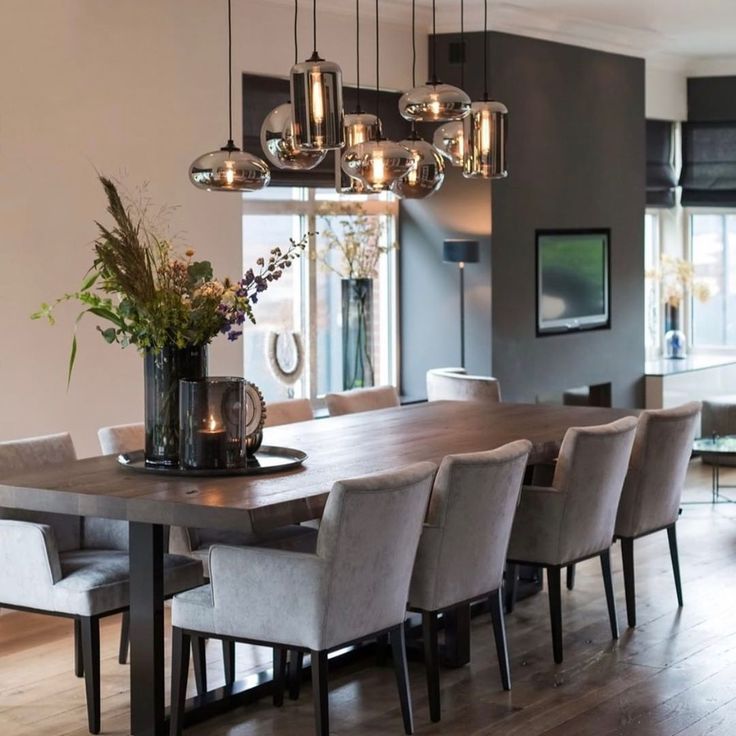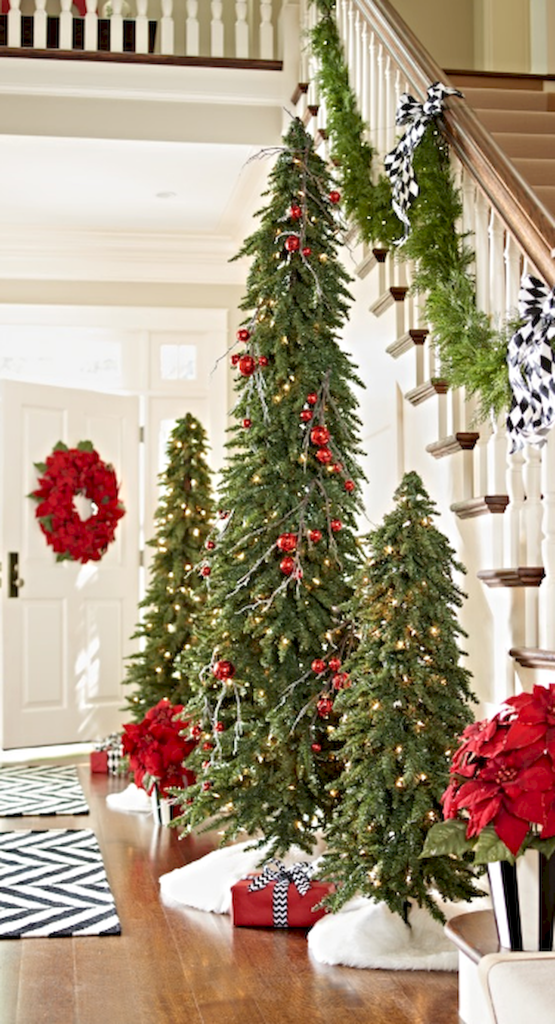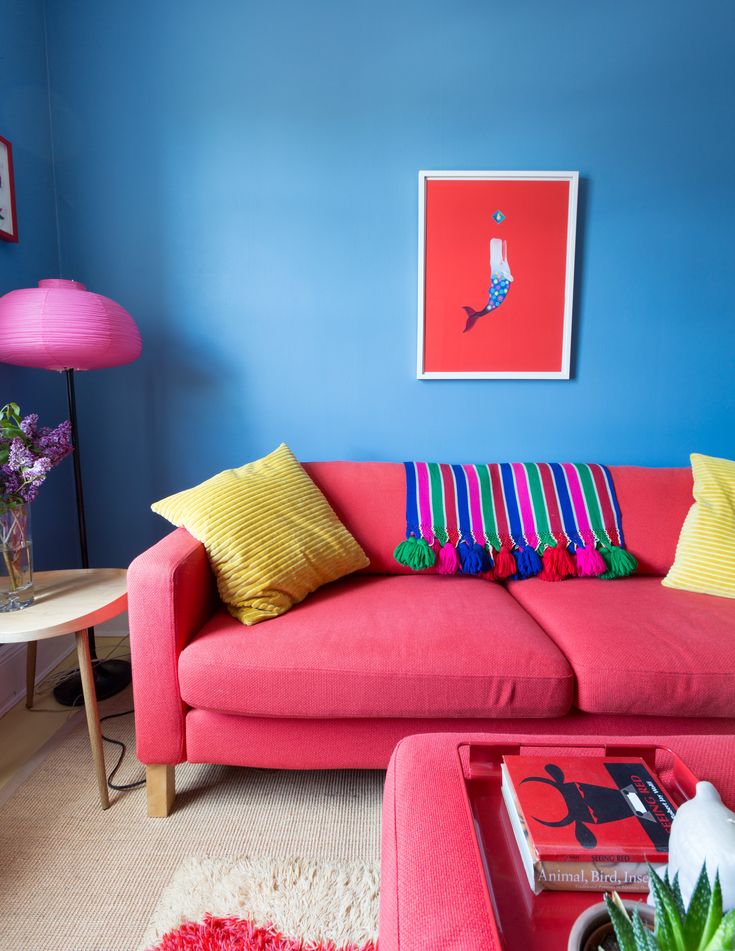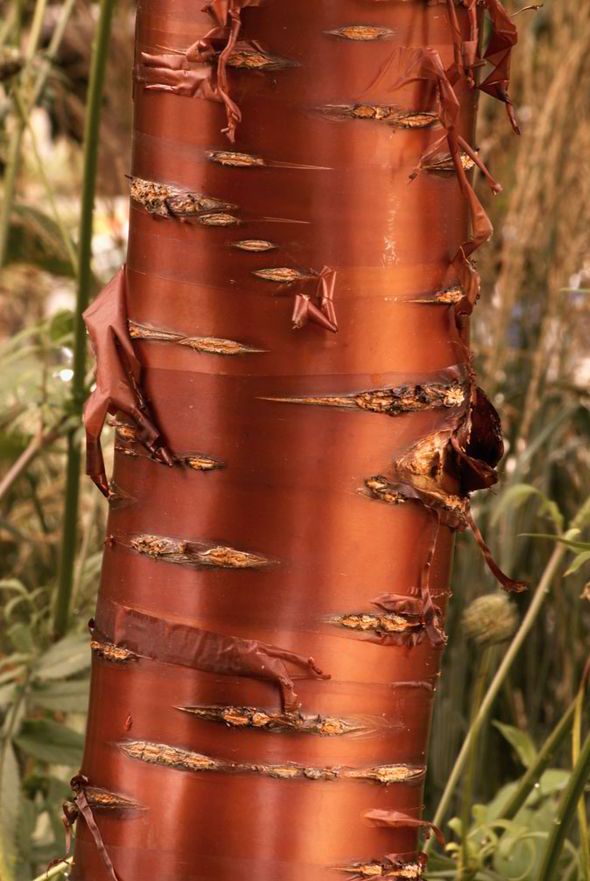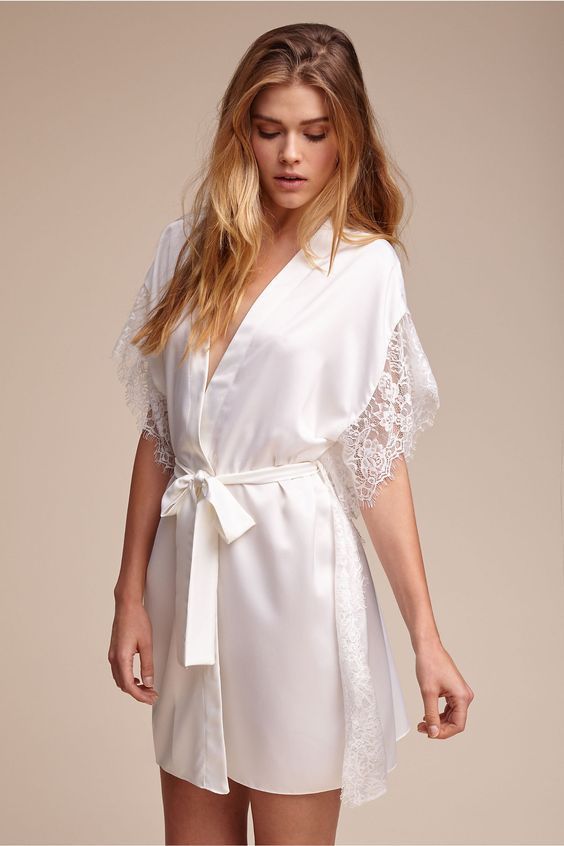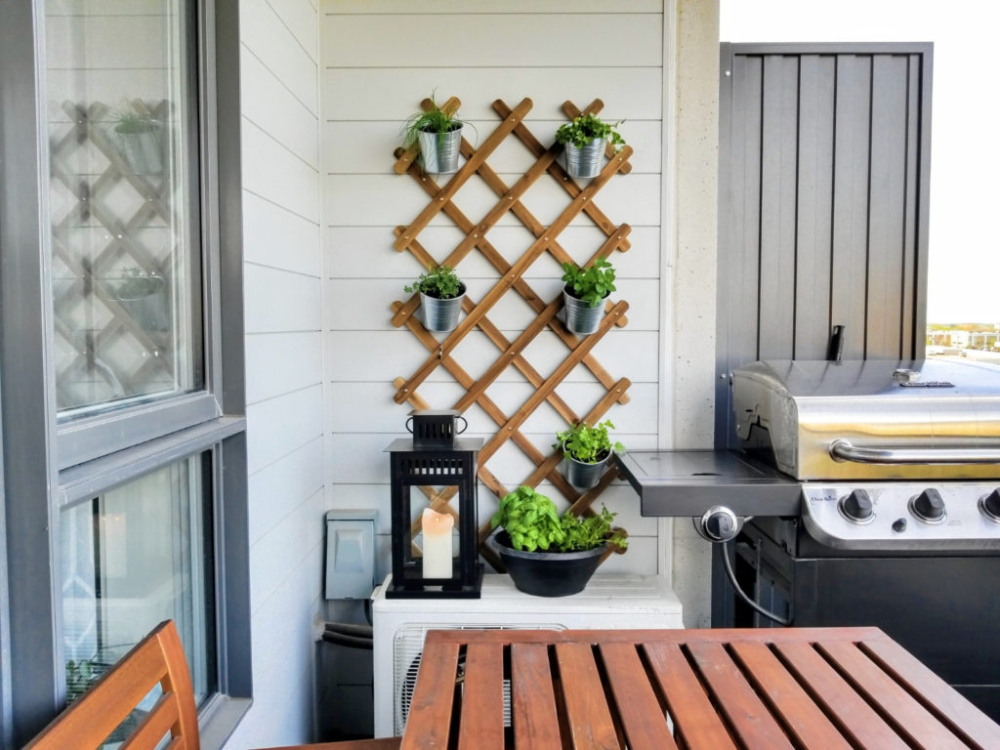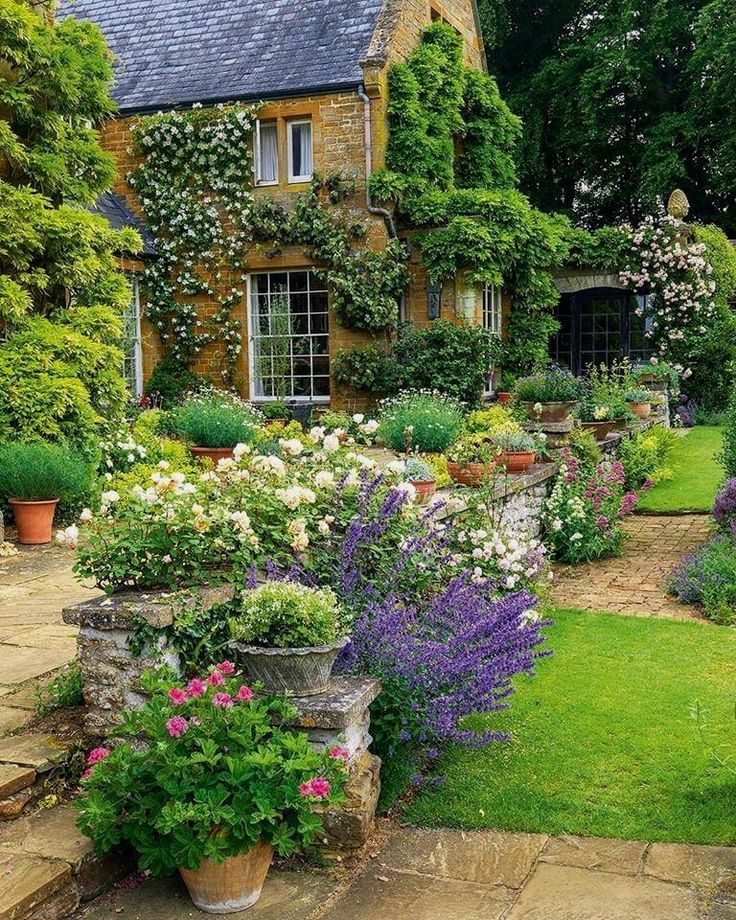Cut flower garden plans
Plans for Cutting Gardens with Planting Map
More Articles
Find more garden information
Other Article Categories
Choose CategoryVegetable GardeningFlower GardeningSoil and CompostBackyard HabitatPests and DiseasesIndoor GardeningLandscape and LawnRecipesDIYAdvice Flower Gardening Plans for Cutting Gardens
Details for two gardens that ensure bouquets from summer to fall
By Kathy LaLiberte
The cutting garden in mid-July.
The designs for these pint-size cutting gardens, employs the same 1 ft. x 1 ft. thinking that we brought to the vegetable garden in our Kitchen Garden Planner. There's nothing special about the dimensions of these two garden designs — these are just the dimensions of the beds we had available in our display gardens here in Burlington, VT. It should be easy to adjust these plans to suit whatever space you have available in your own garden. We allowed for a 1-foot wide path down the center.
Most of the garden was planted directly from seed. We planted the seeds as soon as possible after any danger of frost had passed. The flowers that went in as plants were the verbena, ageratum, salvia, snapdragons and feverfew. These plants all grow from tiny seeds, and you may find — as we did — that it's easier to deal with them indoors under lights or in the greenhouse. We planted the dahlias as tubers (before they had begun to sprout) and the glads went in as corms (bulbs).
Feel free to substitute with your own favorite flowers. For other good cutting garden candidates, check out the related articles, below.
Cutting Garden 1
This garden is designed for a 7-foot by 7-foot planting area. Each of the 14 sections measures 1-foot deep and 3-feet wide. In most cases, we put 6 plants in each section (about 2 plants per 1-foot x 1-foot area). The sunflowers were not planted as densely.
| Teddy Bear sunflowers and Cupani sweet peas | Path | Teddy Bear sunflowers and Cupani sweet peas |
| Double Click cosmos | Bishop's lace (Ammi majus) | |
| Buenos Aires verbena (Verbena bonariensis) | Blue Horizon ageratum | |
| Feverfew (Tanacetum parthenium 'White Wonder') | Clary sage (Salvia viridis) | |
| Berry Basket zinnia | Lime Green nicotiana | |
| Polar Bear zinnia | Blue Boy bachelor buttons | |
| Giant Fantasy zinnia | Lilliput zinnia |
Cutting Garden 2
This garden is designed for a 7-foot by 8-foot planting area.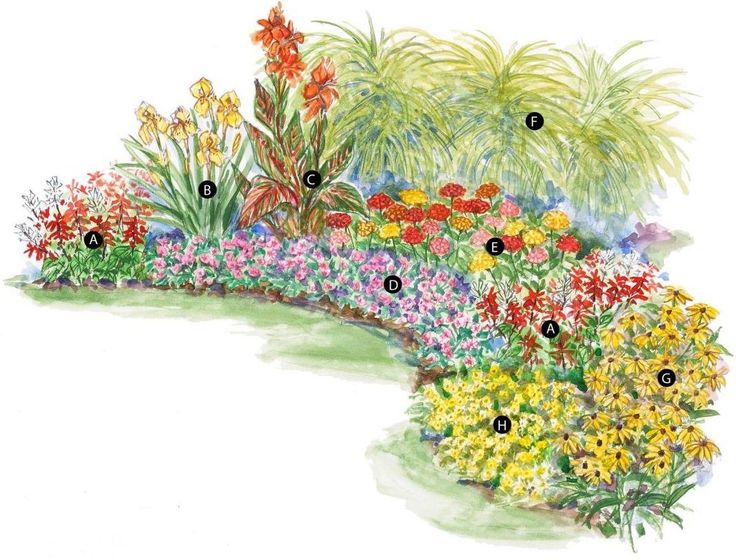 As above, each of the 16 sections measures 1-foot deep and 3-feet wide. We planted just one dahlia tuber per square foot.
As above, each of the 16 sections measures 1-foot deep and 3-feet wide. We planted just one dahlia tuber per square foot.
| Who Dun It dahlia | Path | Who Dun It dahlia |
| Mixed gladiolus | Buenos Aires verbena (Verbena bonariensis) | |
| Berry Basket zinnia | Hot Crayon Colors zinnia | |
| Berry Basket zinnia | Hot Crayon Colors zinnia | |
| Rocket White snapdragon | Lime Green nicotiana | |
| Feverfew (Tanacetum parthenium 'White Wonder') | Blue Horizon ageratum | |
| Bishop's lace (Ammi majus) | Victoria Blue salvia | |
| Blue Boy bachelor button | Clary sage (Salvia viridis) |
Last updated: 08/02/2021
Share this Article:
People who read this article often purchase
Related Articles
-
Feed Your Soul: Plant a Cutting Garden
-
Planting My Bountiful, Beautiful Backyard
-
How to Grow Gladiolus
Get the Dirt
Stay up to date on new articles and advice.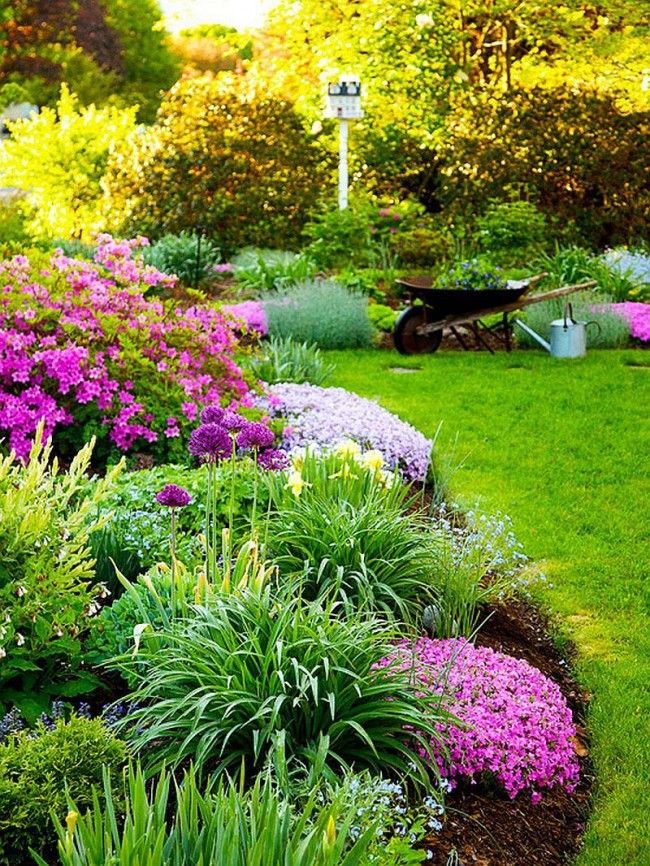 Please fill out the information below.
Please fill out the information below.
Share this Article:
Related Articles
-
Feed Your Soul: Plant a Cutting Garden
-
Planting My Bountiful, Beautiful Backyard
-
How to Grow Gladiolus
Planning a cut flower garden: plus the flowers to grow
(Image credit: Future)
Many of us dream of planning a cut flower garden in our own backyards, having fallen in love with the idea of strolling down the garden to harvest a horde of richly colored blooms that we can then proudly display in our homes.
Thankfully, it's really easy to plan a cut flower garden as part of your flower bed ideas. All you need is an empty plot of ground and a packet of seeds.
‘Growing a cut flower garden is a much more sustainable way of growing flowers for arranging in your home and avoids buying ones that have been flown halfway across the world. Intersperse flowers you wish to use for cutting with shrubs and herbaceous perennials,' explains Amelia Bouquet who trained in garden design at the English Gardening School .
Just remember, everyone’s cutting garden is different, so pick the right flowers for you and your garden – and make sure they keep coming.
(Image credit: Leigh Clapp)
Planning a cut flower garden:
Before you get caught up in the blooms that you're going to plant, you must first consider the practical elements of planning a cut flower garden – namely it's size, shape and position. Knowing how to plant a flower bed is also useful in planning a cut flower garden as this will help you design a space in which the flowers can thrive.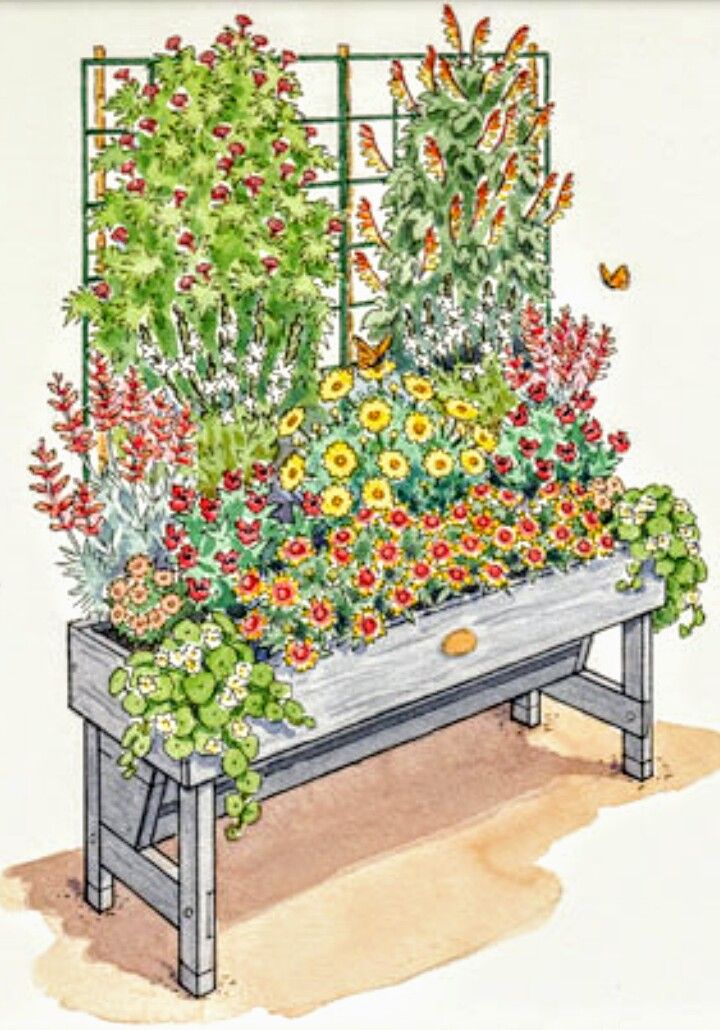
(Image credit: Salsabil Morrison)
How do you map a cut flower garden?
The easiest way to map a cut flower garden is on paper. Pick your position and then draw out a scale replica of your garden including your new addition. This will help you to visualize how your cut flower garden will work in the space and also help you avoid issues once you start building.
One key consideration when planning a cut flower garden is accessibility so factor in lots of garden path ideas and ensure that your compost heap and water supply are nearby, too.
Unlike traditional garden ideas, you need to be able to easily access all the plants and flowers for cutting. Therefore, it is a good idea to opt for a long thin design where possible, rather than a thick bed. Also ensure you can completely walk around the bed to enable you to easily take flowers from all sides.
'One of the main rules would be to account for ample direct sun light, the most flashy flowers are usually those from perennials that receive a lot of sunlight,' recommends landscape designer Jonathan Fargion .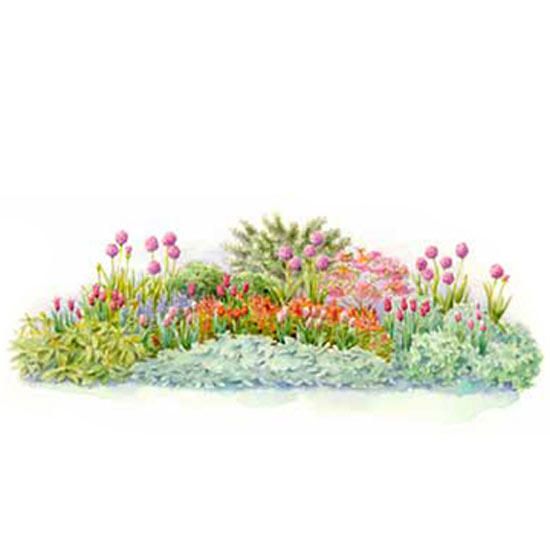 'Once you have established a sunny location, you might still want to grow something that does well in shade. Here, you can strategize to use the taller plants so that they cast shadow onto the more shady ones. For constant ample light plan rows in direction east to west, if you want to cast shades, plant in rows in direction north to south.'
'Once you have established a sunny location, you might still want to grow something that does well in shade. Here, you can strategize to use the taller plants so that they cast shadow onto the more shady ones. For constant ample light plan rows in direction east to west, if you want to cast shades, plant in rows in direction north to south.'
(Image credit: Leigh Clapp)
How much space do you need for a cut flower garden?
There are no rules on the amount of space you need for a cut flower garden, however, if you pick a spot with the potential of expansion, this will avoid any regrets further down the line.
'The amount of space you need depends on the type of plants. Spacing should be calculated from the center of the plant. If you buy them in pots, think of the center of the pot as a point of reference. And always account for its mature size. Perennials can take about 18 inches from center, while a shrub like hydrangea takes more space (things can always be controlled through pruning).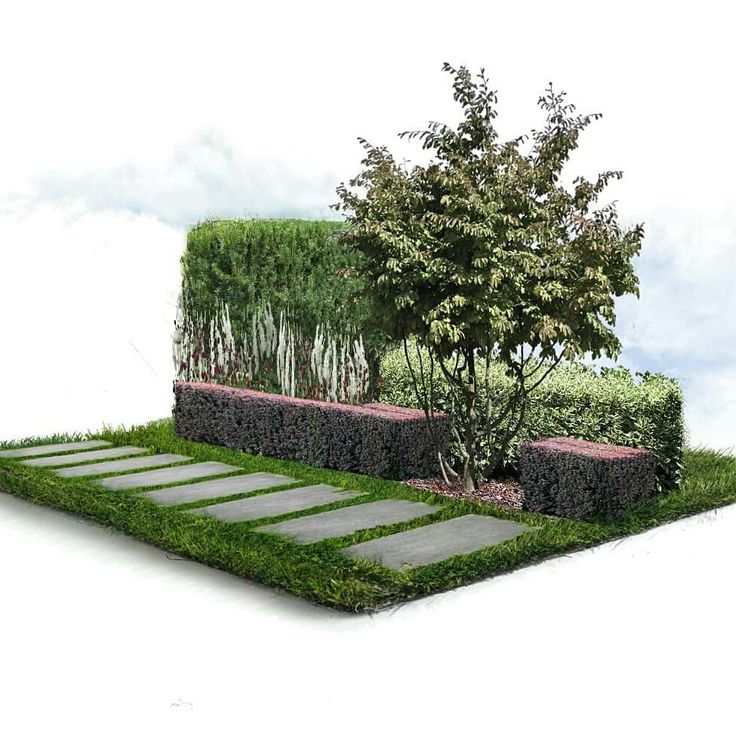 As a rule of thumb I'd space the perennials at 12 inches from the center and shrubs 24 inches from center, planted in rows that are 24 inches apart, to have space to attend the plants,' advises Jonathan Fargion.
As a rule of thumb I'd space the perennials at 12 inches from the center and shrubs 24 inches from center, planted in rows that are 24 inches apart, to have space to attend the plants,' advises Jonathan Fargion.
If you are looking to add a cutting garden to your small garden ideas, then create a perennial cut flower bed within your existing borders. ‘It means you don’t have to section off areas of ground when space is already tight,’ adds Amelia Bouquet .
The general rule for cut flower gardens is to grow the plants in lines, which requires lots of space. Instead combine cutting flowers in looser groups amongst other planting. Choose flowers that multitask, looking good in both garden borders and indoor arrangements.
(Image credit: Salsabil Morrison)
How deep should flower beds be?
'If you are limited with space, I'd suggest at least 18 inches of soil depth,' recommends Jonathan Fargion. However, deeper is always better. If you are concerned about the quality and depth of your soil, consider raised garden bed ideas for your cut flower garden. These will also give you total control over the quality of the soil types and soil health, thus increasing the health and productivity of your plants.
These will also give you total control over the quality of the soil types and soil health, thus increasing the health and productivity of your plants.
If you've not already added raised beds to your garden, learning how to build a raised garden bed will get you started.
(Image credit: Alamy)
How to start a cut flower garden
Once you've finished planning a cut flower garden, it's time to make it a reality. Mark out your beds and lift the turf. If you are using raised beds, these will need to be built.
The next step is to 'get rid of weeds, add in organic matter and rake the soil to a fine tilth. You may like to use a Mypex weed control mat to prepare a sterile weed-free seed bed,' advises H&G garden expert Leigh Clapp.
Then comes the long anticipated planting. 'Plant flowers close together or put in supports ready to stop tall plants flopping over as they grow. Combine plants of similar heights, growing conditions and flowering times, including both focal flowers and fillers.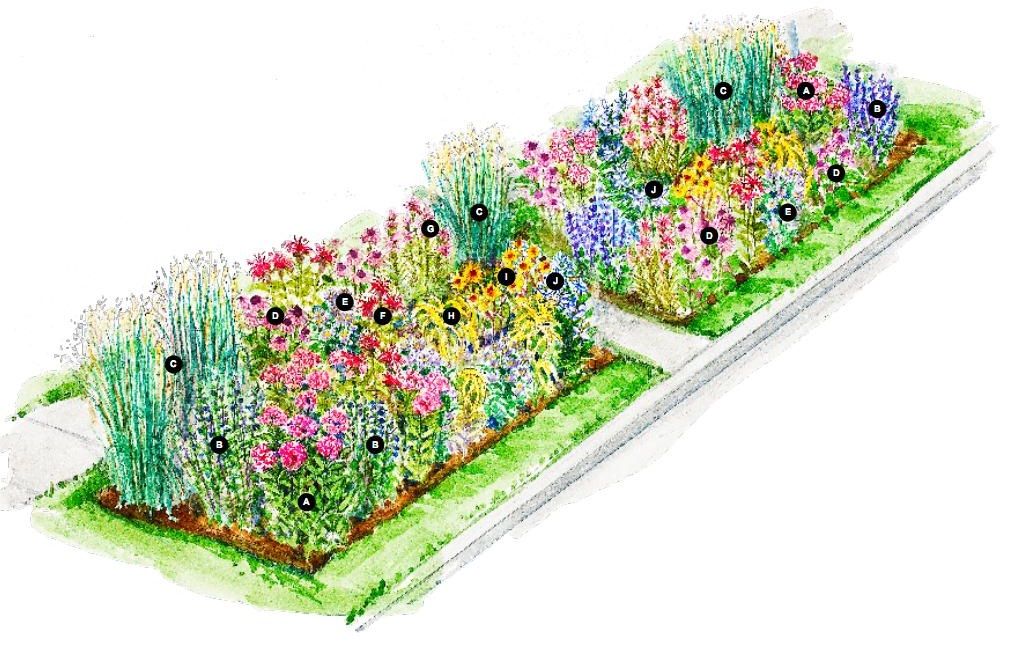 For a year-round successional supply you could have options such as hellebores, spring bulbs, aquilegia, wallflowers, pinks, Sweet William, peonies, alstroemeria, sunflowers, dahlias, asters, chrysanthemums, kniphofias and daphne in winter. Include an abundant medley of self-replenishing, cut-and-come-again varieties, such as cosmos, zinnias, scabious and sweet peas, which will produce more flowers after cutting.
For a year-round successional supply you could have options such as hellebores, spring bulbs, aquilegia, wallflowers, pinks, Sweet William, peonies, alstroemeria, sunflowers, dahlias, asters, chrysanthemums, kniphofias and daphne in winter. Include an abundant medley of self-replenishing, cut-and-come-again varieties, such as cosmos, zinnias, scabious and sweet peas, which will produce more flowers after cutting.
'Always plant more foliage and fillers than you think you will need, as using plenty of greenery in your arrangements will make them look more natural and rustic,' adds Leigh.
(Image credit: Salsabil Morrison)
What flowers to grow in a cut flower garden
The key to a productive cutting garden is to choose plants with many flowers that bloom for a long period of time.
These are some of the best flowers to grow for a cut flower garden:
- Roses
- Dahlias
- Sweet peas
- Cosmos
- Crocosmia
- Tulips
- Alstromeria
- Mexican sunflowers
- Chrysanthemums
- Freesias
Vibrant orange Mexican sunflowers and crocosmia are combined with magenta cosmos and pale mauve scabious for a profusion of contrasting color that looks good both indoors and out
(Image credit: Selina Lake)
‘My favorites are sweet peas, dahlias, Mexican sunflowers and cosmos,’ says stylist Selina Lake , whose new book Shed Style is out now.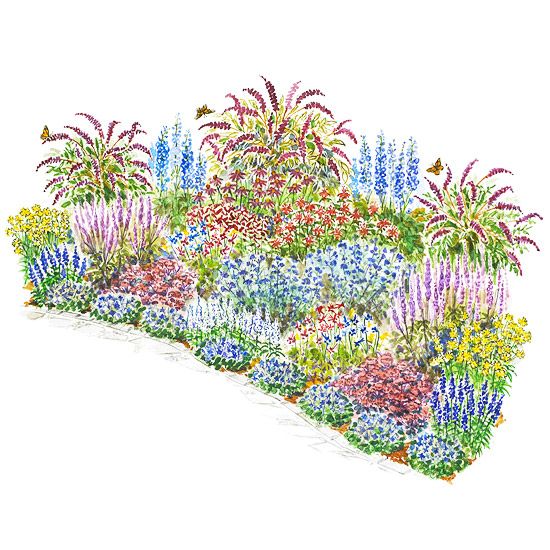 ‘These are great choices as picking the flowers regularly encourages more flowers to bloom, giving you a constant supply for cutting.’
‘These are great choices as picking the flowers regularly encourages more flowers to bloom, giving you a constant supply for cutting.’
Choose plants in color combinations you find appealing. ‘I like to mix vibrant pink cosmos and dahlias, and dusky pink zinnias with pops of orange from Mexican sunflowers and crocosmia for colorful late summer arrangements.’ You can try collecting seeds from some flowers you have grown to increase the stock for your cutting garden for free – just ensure they are not hybrids as these may not come true from seed.
Your plot needs to be in full sun and as your plants grow you may need to add stakes and supports to keep the blooms upright. Growing a cut flower garden is also a great project to do when gardening with children.
(Image credit: Selina Lake)
Every cutting garden needs roses. ‘I find that ‘Gertrude Jekyll’ and ‘Constance Spry’, with their highly scented pink rosettes, work well with a few stems of nigella, whose lime-green feathery leaves top the purply-blue flower like the ring-setting for a glamorous jewel,’ says Jane Cumberbatch, author of Pure Style in the Garden .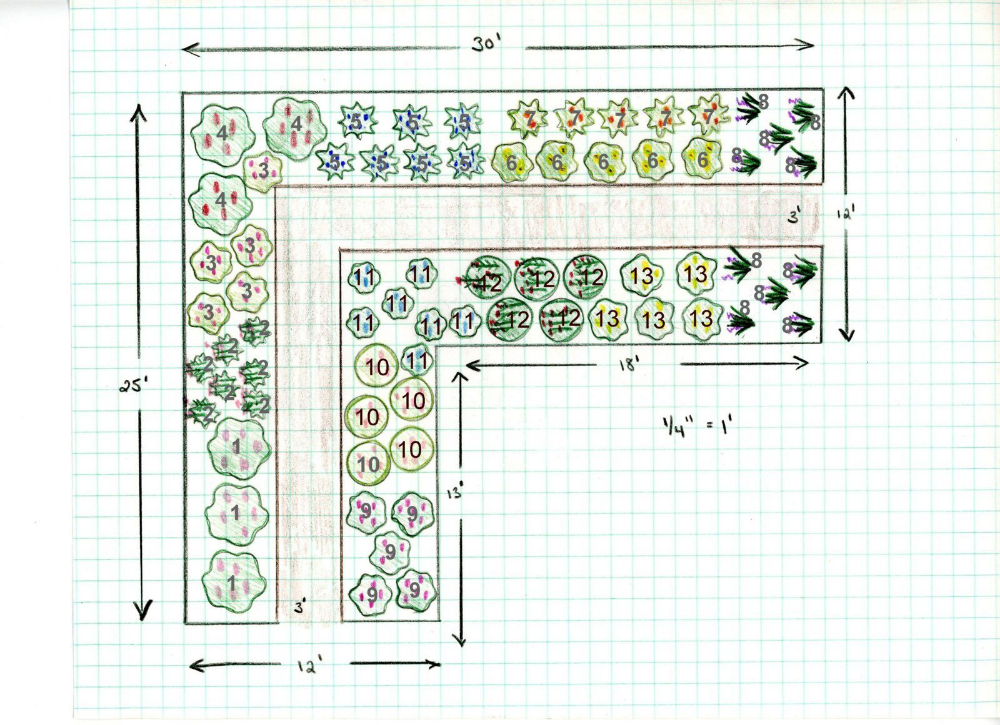
‘The pink/ blue/lime-green combination is a favorite. I don’t usually go for elaborate vases and containers. A simple, utilitarian look tends to be my choice: glass jam jars, rounded pudding basins, enamelled jugs.’
Constance Spry roses: a mass of pink, scented blooms to be enjoyed fleetingly as it flowers only once a year
(Image credit: Pure Style in the Garden by Jane Cumberbatch (Pimpernel Press))
Keep flowers coming with successional planting
‘Think in terms of successional flowering too,’ says Carien van Boxtel, who designed a cut flower garden for 2021's RHS Hampton Court Flower Show. ‘Use space as economically as possible, with one bed for multiple crops. Once spring bulbs have finished flowering, replace them with plants grown from seed, like cosmos and sweet peas.’ If you're unsure where to start, these succession planting tips will help to get you started.
For a regular supply of blooms, ensure you deadhead throughout the season.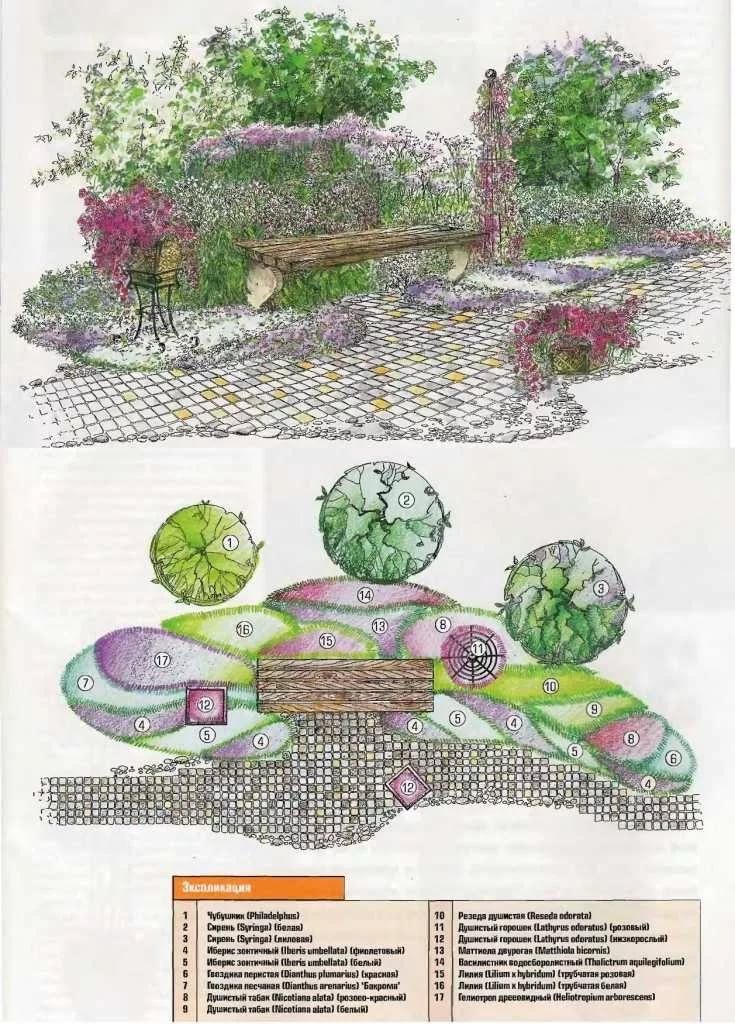 Pinch off the finished flower, just below where the base of the flower joins the stem.
Pinch off the finished flower, just below where the base of the flower joins the stem.
Growing foliage for flower arrangements
Euphorbia oblongata
(Image credit: Future/Rebecca Pow)
Foliage works the same way in the garden as in arrangements. When planning a cut flower garden, use it as a filler and to add interesting architectural shapes. The idea is to make your design as three-dimensional as possible.
‘The more leafy stuff you use, the more your arrangement will look nicely home-made rather than florist-bought,’ says plant expert Sarah Raven .
‘For primary foliage, I often use euphorbia oblongata. It's brilliant acid-green color adds brightness and contrast, and it’s one of the best foliage plants because it has a robust, upstanding structure. It also has thin stems but a generous horizontal top, so you don’t need huge quantities to create the right effect.’
You can also achieve this with interesting grasses or seed pods, or vertical leaf spikes such as Bells of Ireland.
Every cut flower plot should have dahlias, cosmos, scabious, sweet peas and calendula as they will keep on giving you flowers
(Image credit: Carien von Boxtel)
Cutting garden flowers for a sunny garden
(Image credit: Selina Lake)
Try tall and airy verbena bonariensis for graceful structure. Long flowering coreopsis adds a punchy pop of sunshine color, while phlox paniculata has clusters of gorgeous fragrant flowers. Floaty silk-petalled cosmos add an ethereal touch and the tall spires of erysimum bring masses of mauve flowers to the mix. Combine these to create a naturalistic arrangement.
‘Fill out your vase with stems of pittosporum, perfect for providing limitless foliage to use as a backdrop for brighter colors, plus a great filler shrub for sunny borders,’ says garden designer Amelia Bouquet.
Sweet peas are the perfect choice for a container. They are an abundant source of cut flowers and come in an array of pretty colors.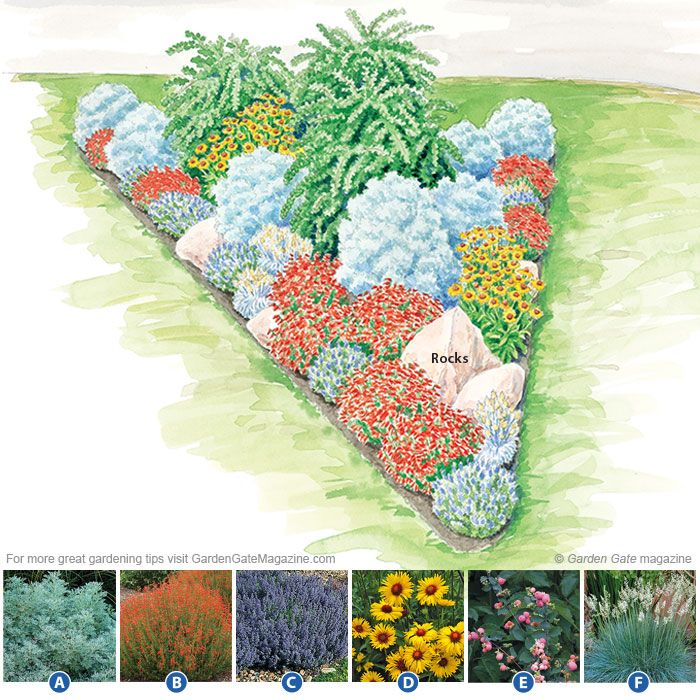
Cutting garden flowers for a shady garden
(Image credit: Amelia Bouquet Garden Design)
During the summer months, astilbe is the star of the cutting garden with its elegant plumes of feathery flowers and attractive ferny foliage, while starry shaped astrantia blooms are perfect for creating lacy drifts.
‘Both are striking plants that love a shady dappled spot and look equally good in the vase,’ says Amelia Bouquet.
Alchemilla mollis is one of the prettiest foliage plants around. The velvety soft fan-shaped leaves add a pretty effect and can be used to introduce detail to a delicate arrangement too. For containers, try orange calendula (marigolds) for a stunning display. They will tolerate shady conditions, and make excellent cut flowers for arrangements too.
Harvesting cutting garden flowers – the right way
(Image credit: Carien von Boxtel)
Cut your flowers when they’re about to show some color. For best results, collect cut flowers early in the morning when their stems are fully turgid (filled with water) and avoid picking them if it’s hot or sunny.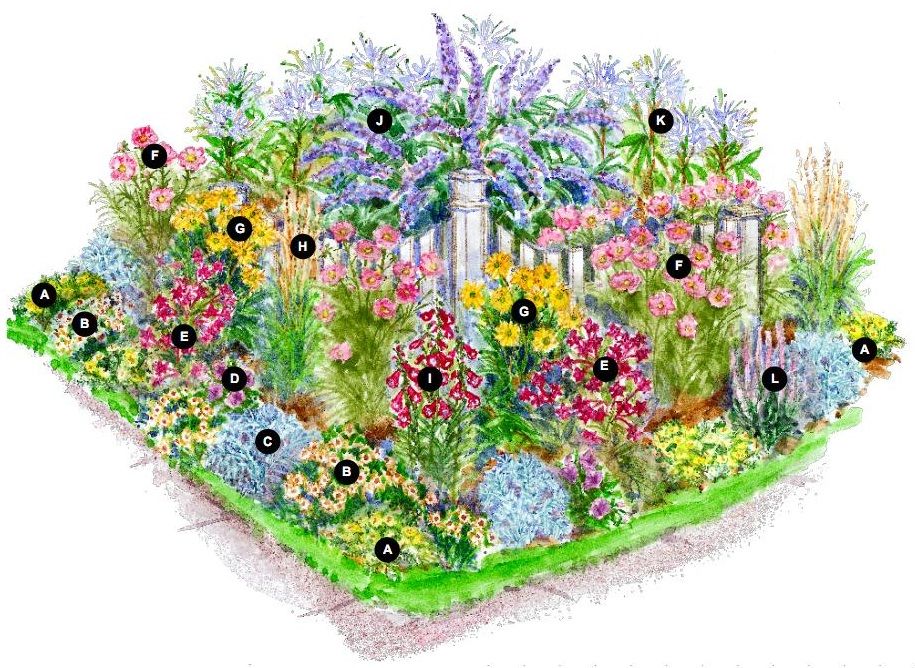 Put the stems straight into a bucket of water before arranging.
Put the stems straight into a bucket of water before arranging.
Many annuals, such as sweet peas, as well as some perennials will bloom over a longer period if picked regularly. Follow the stem you want to pick until you reach the main stem and cut at this intersection. Do not leave parts of the stem behind.
Multiply your stock by collecting seed. Wait until a dry day towards the end of summer, pick the dry seeds of a healthy plant. Shake the stem to let the seeds fall in a container or put a paper bag around the seed head and cut the stem. Hang it upside down to dry. Don’t forget to label when dry.
How to care for a cut flower garden
'A cutting garden is for harvesting; so don’t expect it to look pristine at all times. Deadhead and cut flowers regularly and keep up the weeding and watering. When watering, don’t shower plants from overhead, but water carefully with a steady
jet flow at the base of the plant. The best time to water is in the evening as it allows the plants to soak up what they need overnight.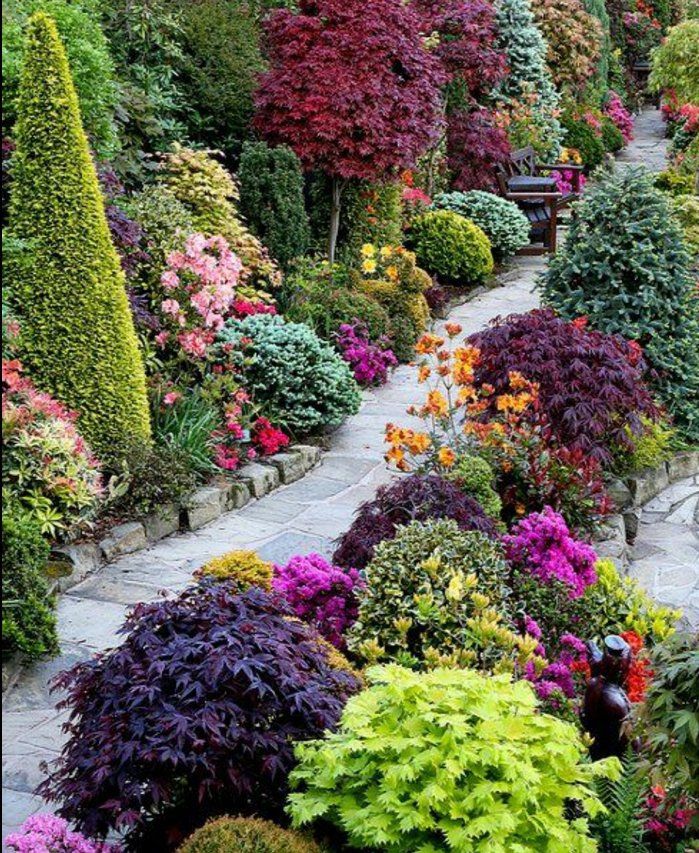 Mulching is valuable to retain moisture and suppress weeds. Many recommend a no-dig gardening, as the less
Mulching is valuable to retain moisture and suppress weeds. Many recommend a no-dig gardening, as the less
you dig over the soil, the less weeds are disturbed. Cutting actually encourages more flowers to grow, especially annuals that have a survival imperative to set seed. Let some of your flowers set seed and collect them to sow the following year, replenishing your own stock for free,' explains Leigh.
Lifestyle journalist Sarah Wilson has been writing about gardens since 2015. She's written for Gardeningetc.com, Livingetc, Homes & Gardens, Easy Gardens and Modern Gardens magazines. Her first job on glossy magazines was at Elle, during which time a visit to the legendary La Colombe d'Or in St-Paul-de-Vence led to an interest in all things gardening. Later as lifestyle editor at Country Homes & Interiors magazine the real pull was the run of captivating country gardens that were featured.
With contributions from
- Holly ReaneyContent Editor and Sub-editor
How to plan a future flower garden
Plot
In order to make your site seem even more attractive and well-groomed, you need to build a flower bed on it.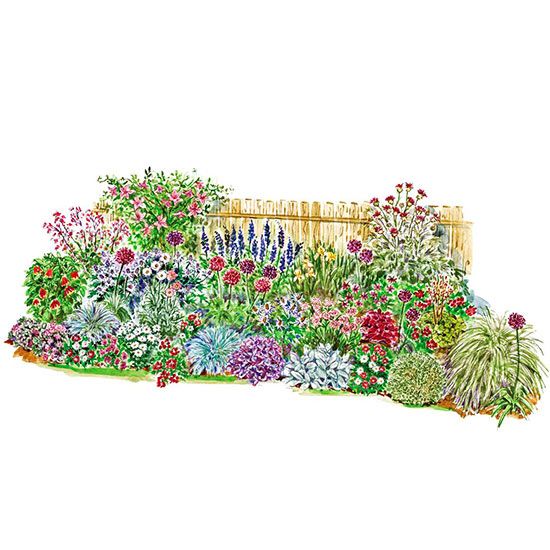 This process is quite simple, but to get a quality flower bed that pleases the eye, you need to work hard. First of all, this concerns drawing up a plan for the location of the flower bed and determining the type of plants for the flower garden. We will consider the features of building a flower bed with our own hands further.
This process is quite simple, but to get a quality flower bed that pleases the eye, you need to work hard. First of all, this concerns drawing up a plan for the location of the flower bed and determining the type of plants for the flower garden. We will consider the features of building a flower bed with our own hands further.
Contents:
Plan of the flower bed - determining the shape of the flower bed
Before starting the construction of the flower bed, decide on its shape. There are several options for arranging a flower garden, which have certain advantages and disadvantages. When choosing one or another flower garden, one should first of all proceed from their individual characteristics of the site.
The first option is regular flower beds, these are flower beds of round, rectangular, square or oval shapes. Such a flower bed is distinguished by an aesthetic order, as a rule, the plants on it are planted and ordered by color. The main quality of arranging such a flower bed is adhering to strict symmetry and creating figures from flowers.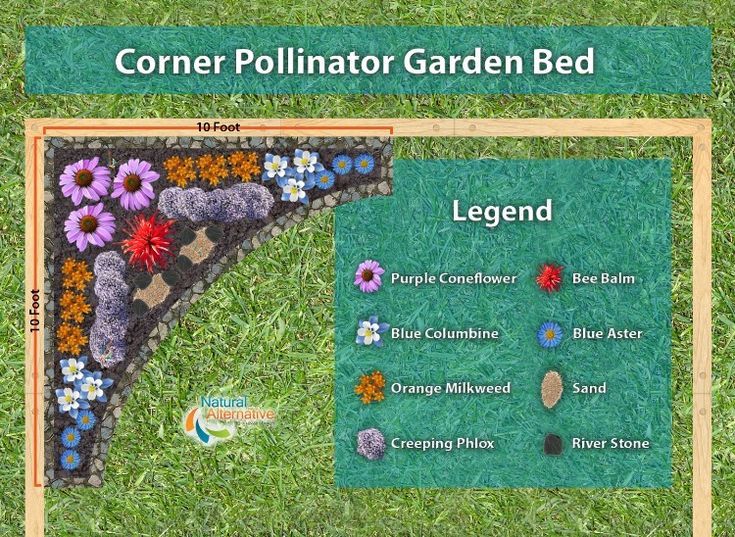 However, to care for such flower beds and to obtain aesthetic compositions, you need to work hard.
However, to care for such flower beds and to obtain aesthetic compositions, you need to work hard.
Creating a natural landscape counterpart is an easier option. Such a flower bed is distinguished by a riot of colors and plants arranged in a chaotic manner. Thus, it is possible to create a natural flowering of plants. On such a flower bed plants are planted that bloom at different periods of time and perennials.
If there is not enough space on your site to build a full-fledged flower bed, then make a vertical flower garden. In order to build such a flower bed, you need a vertical support on which flowers are located.
Another option for building a miniature flower bed is monoflower beds. These beds are suitable for planting a single plant and are most often located in several places on the site. So, for example, if you have a lawn on your site, then by installing several mono-flowers on it, you will be able to save space on the one hand, and decorate the exterior on the other.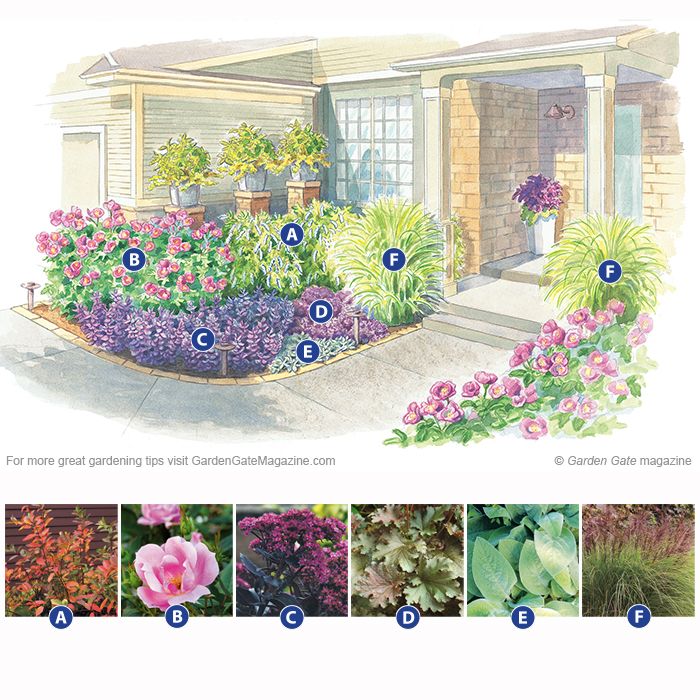 Most often, plants of the same type are planted in such flower beds, for example, asters, peonies, dahlias.
Most often, plants of the same type are planted in such flower beds, for example, asters, peonies, dahlias.
Arabesque-shaped flower beds are of particular aesthetic appeal. To create them, you need to make every effort, since these flower beds have a certain shape and allow you to create whole pictures from plants.
Such flower arrangements are distinguished by volume, massiveness and elegant appearance. Most often, specialists are hired to create them, although it is quite possible to build simpler compositions on your own.
Carpet-type beds are quite popular among lovers of dwarf plants. Low-growing plants are arranged in such a flower garden in such a way as to create a whole composition or picture. Compliance with the technology and sequence of planting plants allows you to get magnificent flower beds.
Selection of the location of the flower bed and features of creating flower beds
When forming a flower bed, it is not enough to plant flowers on it.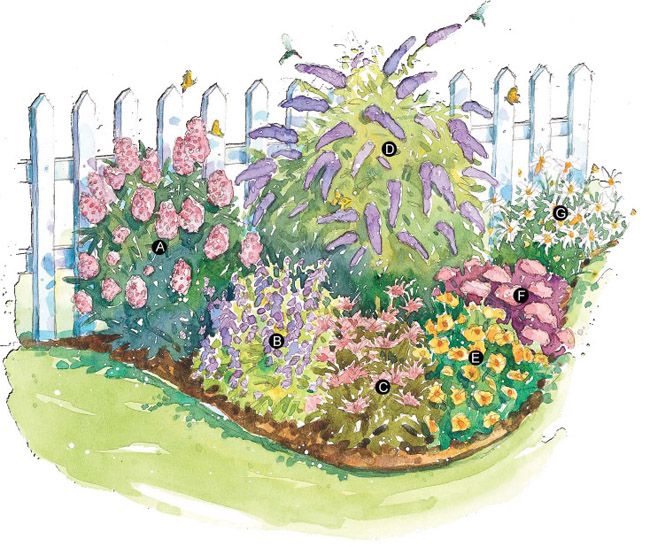 The process of creating a high-quality flower garden is quite lengthy and requires special care and considerable physical effort from its performer. The choice and combination of plants among themselves is determined by their type and flowering period.
The process of creating a high-quality flower garden is quite lengthy and requires special care and considerable physical effort from its performer. The choice and combination of plants among themselves is determined by their type and flowering period.
Initially decide on the color scheme of the flower bed. It can be monotonous one-color or multi-color. A combination of several plant colors is possible. Excessive variegation is more likely to irritate than delight the eye.
Also decide on the main and background colors of the flower bed. The most common colors are green, blue and purple. The main colors are red, orange, yellow, pink. Colors such as white, beige, soft pink, purple or light yellow look great in a flower bed. With their help, it is possible to dilute a too bright and saturated color palette.
The final result of the flower bed organization depends on the right color scheme. With the help of correctly selected colors, it is possible not only to create an aesthetic picture, but also to improve the psycho-emotional perception of the flower bed.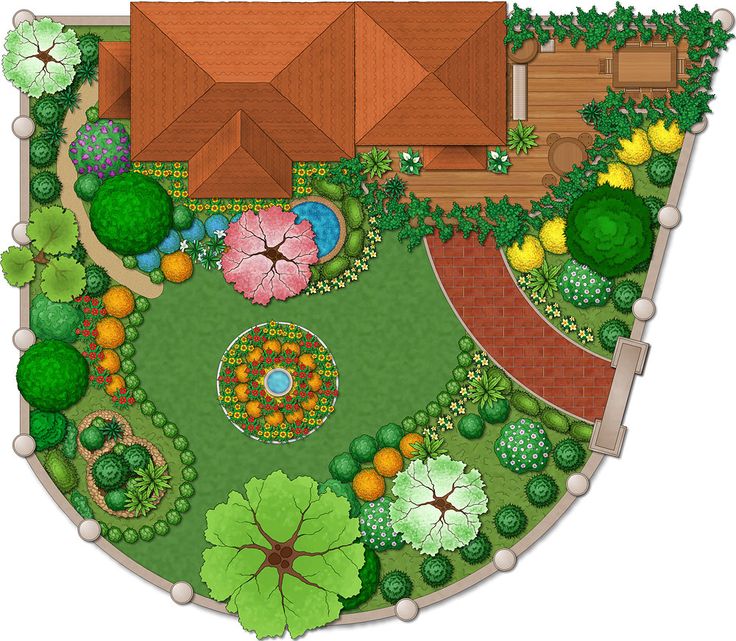 The smooth flow of colors among themselves creates the effect of appeasement. Contrasting and saturated colors invigorate and improve mood.
The smooth flow of colors among themselves creates the effect of appeasement. Contrasting and saturated colors invigorate and improve mood.
Another important point in creating a flowerbed design plan is the correct choice of plants in height. Since some flowers love light, while others love shade, it is necessary to take into account the place of their landing. Also, consider the height of a particular plant after planting it. It is possible that situations may arise in which taller plants take water and light from lower ones, while some of them lose their aesthetic appeal and wither.
When forming a flower bed, try to plant the tallest plants in the center. In this case, they will not take light from other plants. Plant height decreases closer to the edge of the flower bed.
When creating flower bed plans, take into account the flowering time of plants. Choose plants that will alternate with each other as they bloom. Pay special attention to the formation of the flower bed of the picture.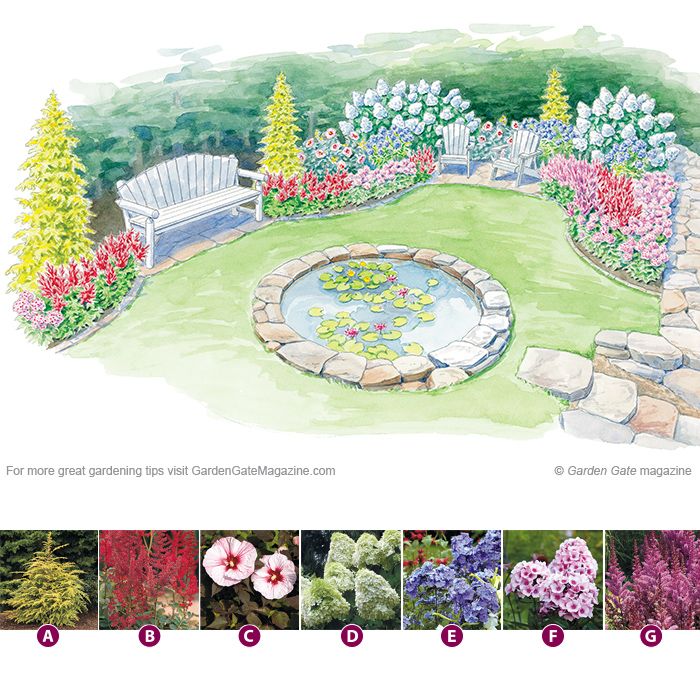 In this case, the plants must clearly harmonize with each other and fade at a certain time.
In this case, the plants must clearly harmonize with each other and fade at a certain time.
In order to get a bed that does not show soil clearance, the plants must be planted quite densely in it. We should not forget that flowers need energy for growth, which is obtained from soil, water and solar radiation. Too densely planted flower bed leads to a lack of nutrients for plants and they become lethargic, and sometimes even die.
The optimal rules for planting plants per square meter of flower bed are as follows:
- about 10 undersized plants;
- approx. 6 compact colors;
- two large plants.
In this case, the flower bed will be moderately saturated, healthy and attractive. Also, choose plants that have similar nutrient, sunlight, and moisture needs.
In order for the planting plan of the flower bed to be complete, it is necessary to correctly separate the flower bed from the plot. The edging of the flower bed plays a big role in the integrity of the perception of the flower garden.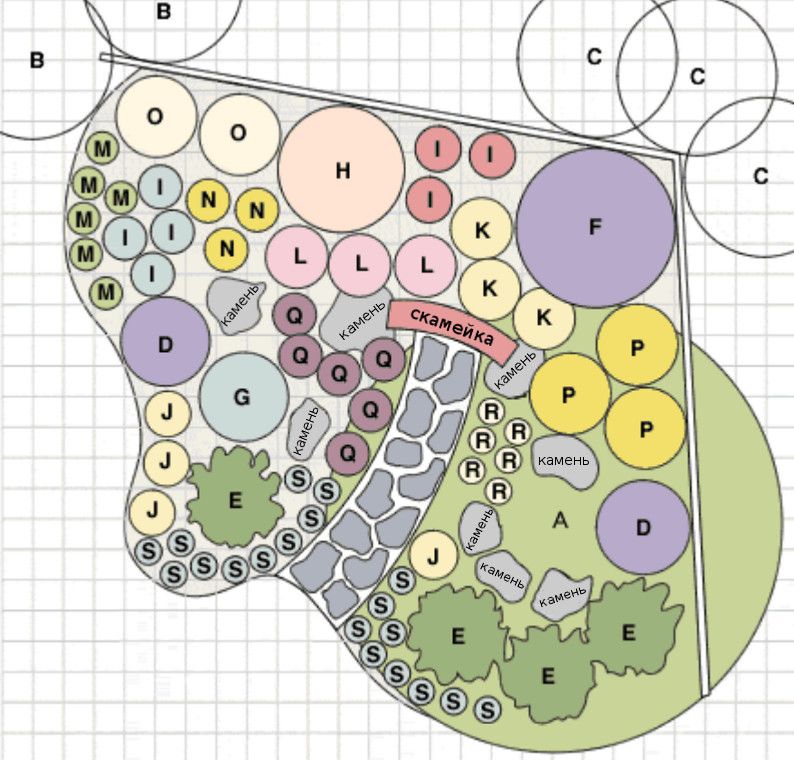 For the manufacture of the border, metal, brick, stone, wood, plastic, a combination of several materials are used. With limited financial resources, a flower bed is built from improvised materials, such as plastic bottles, pieces of glass or tiles, discs, etc.
For the manufacture of the border, metal, brick, stone, wood, plastic, a combination of several materials are used. With limited financial resources, a flower bed is built from improvised materials, such as plastic bottles, pieces of glass or tiles, discs, etc.
Features of the design of the flower garden: background flowers in the flower bed
If the flower bed is small, it is recommended to plant flowers in one color or shade. To create an effective contrasting composition. Yellow and yellow, yellow and purple, yellow and blue, green and burgundy are perfectly combined with each other.
With a smooth shift of colors, the flower bed loses its brightness, but at the same time remains calm. This option is suitable for a flower garden that does not need to be highlighted against the general background.
In the process of organizing a flower garden, pay attention to the following recommendations:
1. All flowers planted in a flower bed turn towards the sun during the day.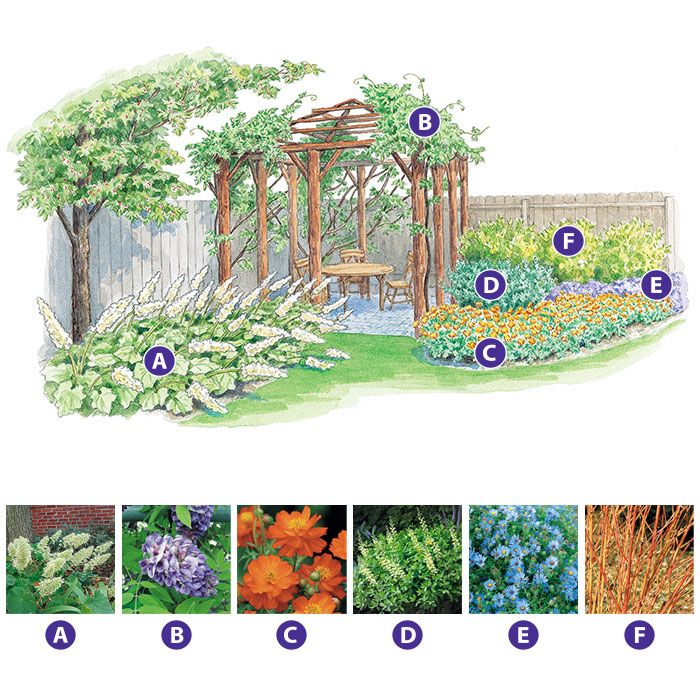 Therefore, if the flower bed is visible from the north, then almost all day the flowers will be turned in the other direction.
Therefore, if the flower bed is visible from the north, then almost all day the flowers will be turned in the other direction.
2. When planting flowers, leave space between rows, as more aggressive and twisty plants can kill weaker ones.
3. To maintain the decorative effect of the flower garden, periodically remove already faded plants from it.
4. To keep the flower bed full of color all season long, combine perennials and annuals. Remember to collect plant seeds, grouping them by type and color.
Conifers and tall grasses will bloom on your site all year round. Periwinkle or tenacious will delight the eye even in the winter season. Keep in mind that too many flowers in a flower bed will make it look messy and even uncomfortable.
When planning a continuous flowering flower bed, consider the fact that the type and number of plants is determined in relation to the size of the flower bed. Plants of a stunted type are located along the perimeter of the flower bed, and taller ones are located in the center.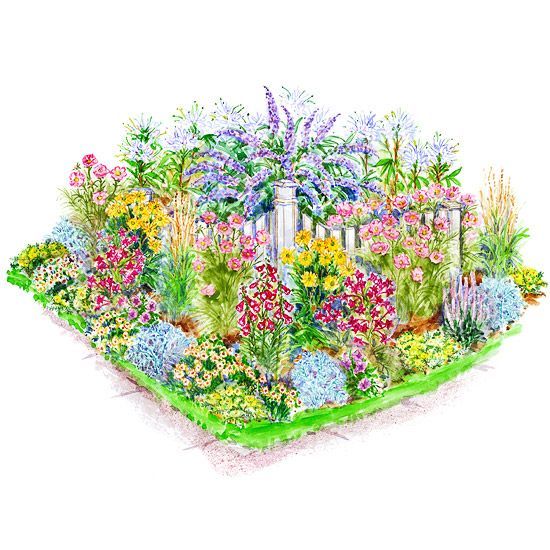
Plants that are of medium height, such as tulip, pyrethrium, are located in the center. To create a harmonious transition between different types of plants, grass is planted between different layers - cuff or gray fescue.
Please note that creating a continuous flower garden is a rather complicated process, which is almost impossible to complete in one season. Therefore, it is also recommended to use annual flowers to decorate flower beds. In addition, if there are certain gaps on the site, annual plants planted directly from pots are perfect for removing them.
Peculiarities of drawing up a plan for perennial flower beds
Flower beds with perennial plants need special care, because as they grow, they need to be trimmed and weeded. The first perennials that bloom in early spring are hyacinth, narcissus, tulip, iris. Such flower beds fascinate the eye and emit pleasant aromas. It is possible to make a flower bed from plants of the same species or a combination of several types of flowers.
After the flowering of the bulbous plants, primroses begin to bloom. These flowers are distinguished by rich, saturated colors, quite often used in the process of creating home flower beds.
Having determined the main components of your flower bed, start working on it. Initially, it is necessary to prepare a base for a flower bed, on the quality of manufacture of which depends on its further operation and the comfort of plant growth.
Prepare the soil for the flower bed after you have determined its shape. Before laying the soil, remove the old sod by 20 cm with a shovel. Take care to remove weeds and add sand to the soil if it consists of clay. If there is sandy soil, add bentonite or some clay to it.
In order to saturate the soil with useful elements, it is recommended to add a little compost to it. Also, you can fertilize the land with the help of special compounds, and then proceed to planting.
A plan for planting flowers in a flower bed is developed in advance.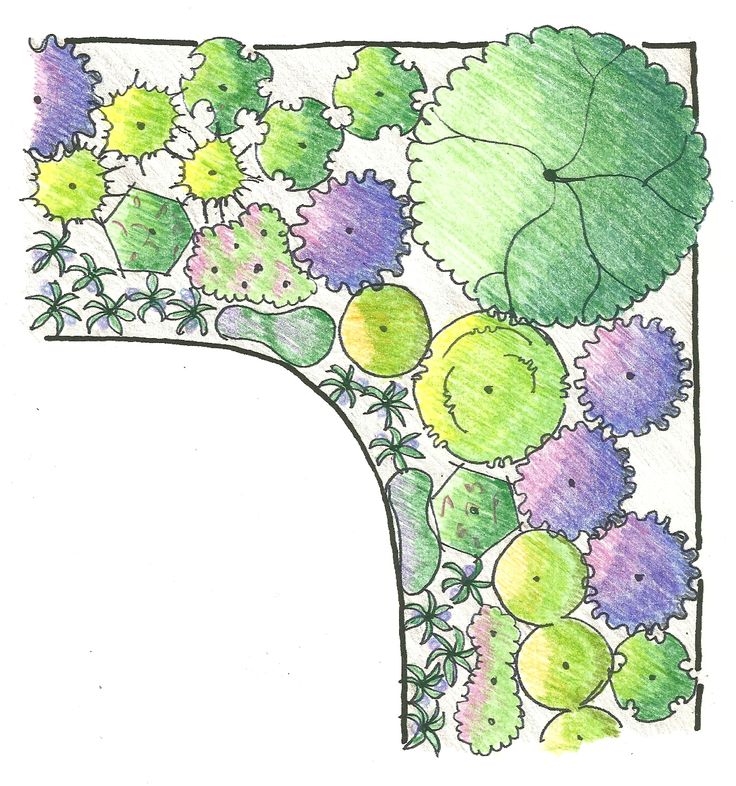 At the same time, it is desirable to take into account the place of planting of all plants, up to the smallest and undersized ones.
At the same time, it is desirable to take into account the place of planting of all plants, up to the smallest and undersized ones.
Flower bed plan for annual plants: features of formation
If you form a flower bed exclusively from annual plants, you will be able to get a more colorful and bright flower garden. With the help of the annual planting of flowers, it will be possible to form a spectacular and very attractive flower bed.
There is a huge variety of plants that make it possible to create a flower bed with annuals. Among them, we note flowers in the form of sunflowers, dahlias, begonias, salvia, snapdragons, marigolds, balsam, etc. In order to create a bright and colorful flower garden without a special pattern, it is enough to plant snapdragon and cosmea flowers in a chaotic manner. Annual plants are both low and tall.
A combination of annuals and perennials is possible. This method of arranging a flower bed is the most popular. Annual flowers are planted after the flowering of early perennials.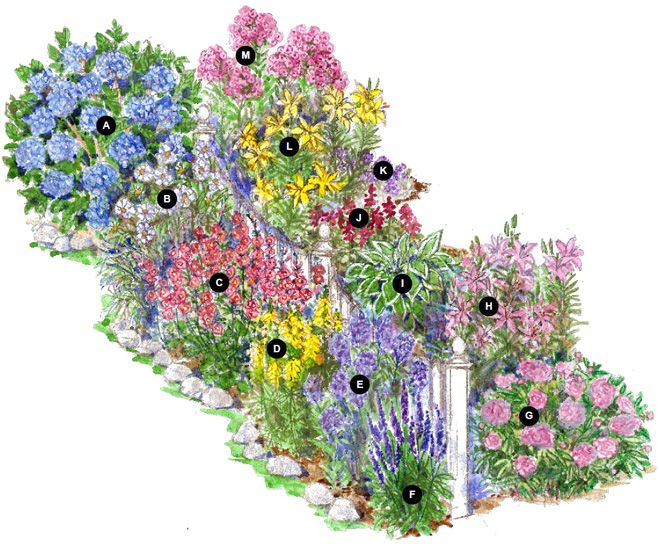
The use of certain schemes or projects of flower garden planning allows you to create a continuously blooming flower bed that will delight its owners from early spring to late autumn. If there is a reservoir on the site, then a flower bed in combination with it will allow you to create a real masterpiece for aesthetic pleasure. But we should not forget that the flower garden needs periodic care, getting rid of weeds, feeding and fertilizing plants, watering, etc.
Without all this, instead of a flower garden, you get an aesthetically unattractive overgrown area with a bunch of limp flowers. In addition, as the flowers fade, it is necessary to remove the flowers so that new ones grow in their place.
Trees in the form of small arborvitae, dwarf pines or ornamental grasses will help to complete the flower garden. With them, your site will be transformed into a real paradise for relaxation.
Flower garden plan and stages of its design
The end of the design stage of flower garden design is its modeling on paper or computer. The plan gives an idea of the shape and size of the flower garden, its location on the ground, the background, the structure, the plants used, their arrangement and numbers, and, if necessary, the garden accessories and small architectural forms used. Russian gardeners have long understood the need for this stage of work. Even in the guide of Vasily Levshin, published in 1826, we read: “For the occupation of these (flower beds - note ed. ) in decent order, they should have their plan with the designation of the places where where to plant or sow.
In the absence of significant practical experience in designing complex flower beds consisting of a variety of plants, it is advisable to plan it on a certain scale. For large flower beds, the scale should be at least 1:50.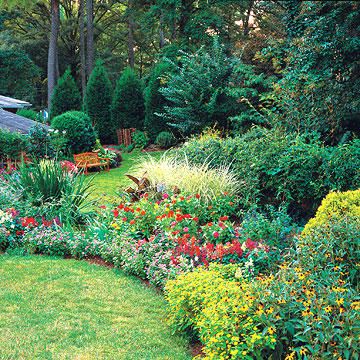
This means that 50 cm of flower bed space is reflected in one centimeter on the plan. It is better for a novice designer to design a flower garden or its fragment on a scale of 1:10. This means that 1 cm on the plan of the flower bed will correspond to 10 cm of the flower bed in the space of the garden. Therefore, 1 m of a real flower bed on a scale of 1:10 will correspond to 10 cm of the designed flower bed on the plan. With this scale, it is easy to determine the areas that plants will occupy in the designed space of the flower garden. For a fragment of even a very large flower garden, this is a very real scale. Replication of flower garden fragments can be done on a different scale, for example 1:25. This means that one meter of a flower bed will correspond to 4 cm on the plan. A 10 m long flower bed on the plan will be shown 40 cm long.
There are a variety of techniques and conventions used in practice to draw up plans for flower beds. The following page provides options for symbols for drawing up plans.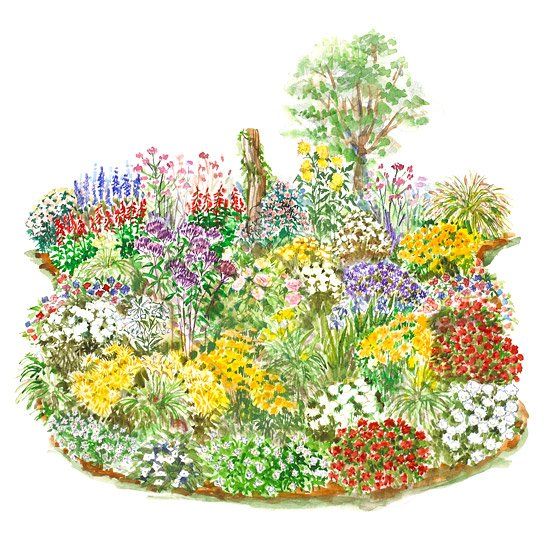 You can find a number of examples of conventional notation from various authors. The plan can be presented in black and white graphics, you can paint the plan with watercolors or make it a computer version. The main thing is that everything is clear and understandable. I know from experience that the use of very bright colors in the plans of large flower beds distracts from the perception of the content of the project and possibly in flower garden designs for urban gardening, when it is necessary to reflect their real colors.
You can find a number of examples of conventional notation from various authors. The plan can be presented in black and white graphics, you can paint the plan with watercolors or make it a computer version. The main thing is that everything is clear and understandable. I know from experience that the use of very bright colors in the plans of large flower beds distracts from the perception of the content of the project and possibly in flower garden designs for urban gardening, when it is necessary to reflect their real colors.
The plan of the flower garden is accompanied by a description of its idea, goals, limitations, features, a list of necessary plants, their grouping, determination of approximate quantities and estimates. For flower beds created for the purpose of continuous flowering, it is desirable to include in the documentation set several of their plans (not necessarily on a scale) indicating the grouping of plants and their flowering calendar.
Variants of symbols for the plan:
- Deciduous trees.
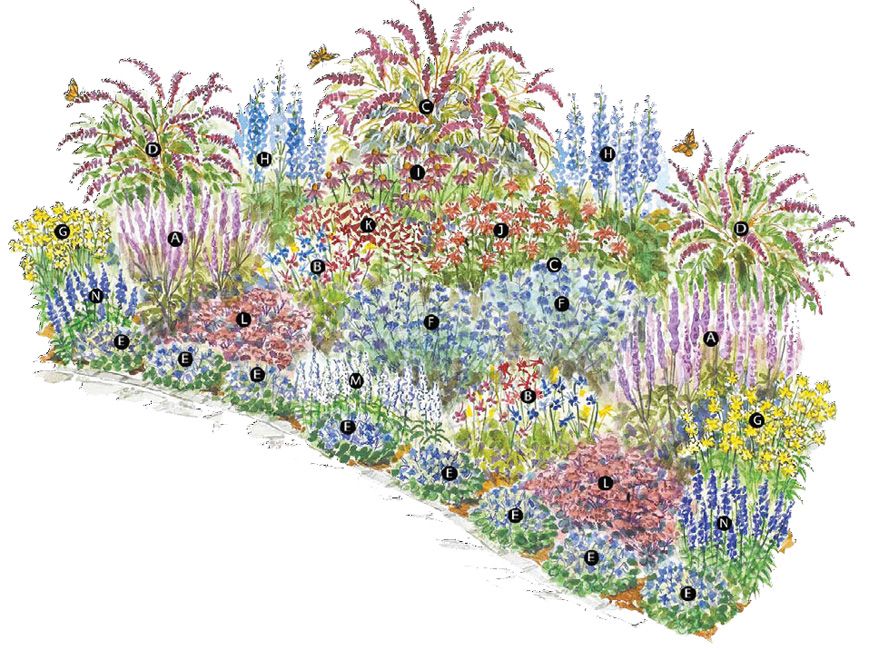
- Coniferous trees.
- Topiary deciduous plants.
- Topiary cut conifers.
- Grutsch free-growing deciduous shrubs.
- A group of coniferous shrubs.
- Individually growing deciduous shrubs and small trees.
- Single growing coniferous shrubs and small trees.
- Free growing deciduous shrub hedge.
- Sheared hedge of deciduous shrubs.
- Sheared coniferous hedge.
- Individual accent herbaceous plants.
- Bulb plants.
- Creepers on supports.
Stages of designing a flower garden
Summing up all of the above, we will determine the sequence of stages for selecting plants in a flower garden or composition. The result will be a reduction in the possible assortment of plants to a specific list and the determination of the mutual arrangement of plants in the space of the flower garden. We fix the final result on the plan.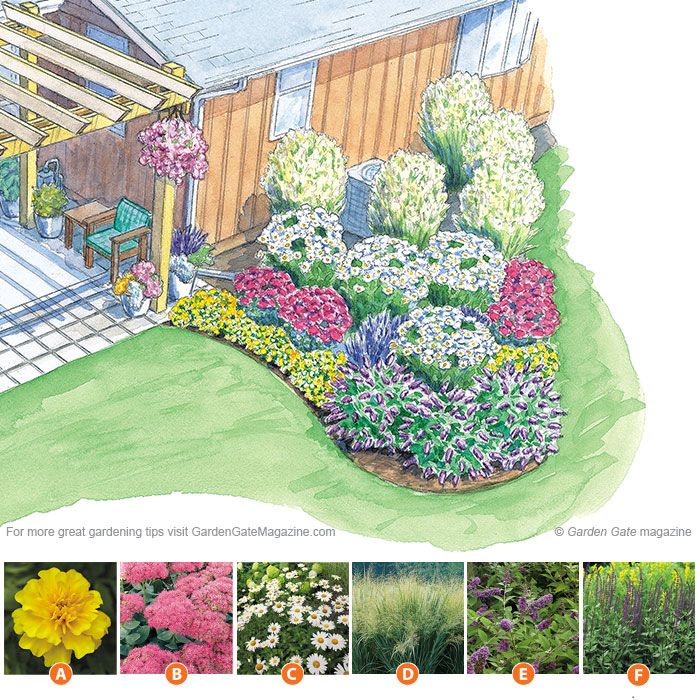
Analysis of the internal space
compositions
Refinement of the flower garden
The place of the flower garden, its functions, specific viewpoints always allow you to clearly define its structure and choose the right plants for its implementation. In this case, a perspective is formed in the space of the pergola at the focal point - the sculpture. So the background is very important. In this case, these are varietal mock oranges and park roses of Canadian selection. The base of the sculpture is decorated with plants of the longest decorative effect. This is a combination of bulbous, Fortune's euonymus "Emerald Gold" and Thunberg's barberry "Bagatelle", contrastingly shaped by a haircut. Garden of the first year. There is no full background for this season yet. June. Moscow region.
Written fixation of garden and flower bed conditions. It may not be necessary to reflect all the results of our research in the accompanying documentation, but some language should be recorded in writing.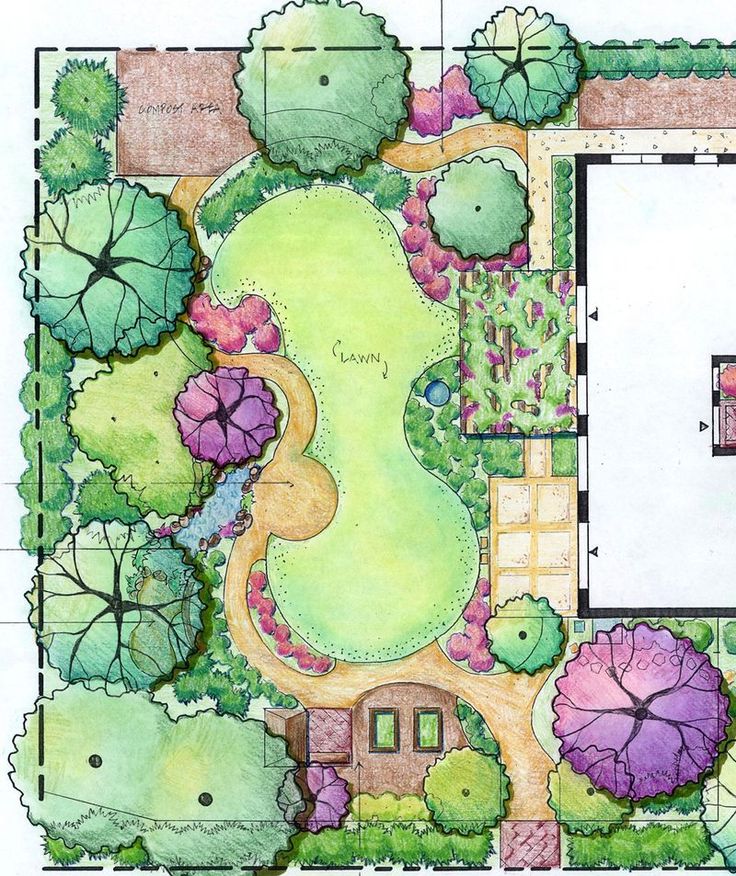 These include a description of the location of the flower garden and its features that will affect the selection of plants: in the shade, in the sun, on a slope, in a clearing, in a forest, you should also indicate the close standing of groundwater, the presence of strong winds, etc.
These include a description of the location of the flower garden and its features that will affect the selection of plants: in the shade, in the sun, on a slope, in a clearing, in a forest, you should also indicate the close standing of groundwater, the presence of strong winds, etc.
Clarification of the location of the flower garden, its shape, size, viewpoints and structure. If a flower arrangement is being created for the entire garden, then this must also be specified. The form of flower beds is determined in accordance with their purpose, functions and structure-forming principles of organizing the space of the garden. The main mistake at this stage is planning small or too narrow flower beds that are not proportional to the space in which they are located. A narrow flower garden will not allow you to create a spectacular volume that is well readable in the space of the garden. The specific place determines the structure of the future flower garden.
If it is a flower garden or flower gardens that you can move around and the viewpoints are constantly changing, then we will create either an island flower garden or a flower garden with an open structure.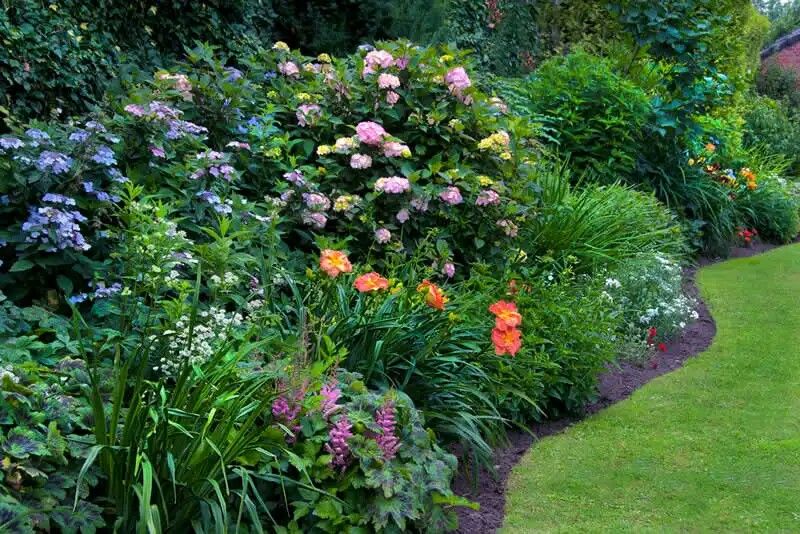 A balanced ratio of the area occupied by plantings and the plane of the lawn will be very important. An exception may be a shady garden, where ground covers and their combinations act as a lawn.
A balanced ratio of the area occupied by plantings and the plane of the lawn will be very important. An exception may be a shady garden, where ground covers and their combinations act as a lawn.
Shade flower garden near the dry masonry retaining wall. Small astilbes, primroses, stonecrops, ferns, periwinkles, etc. feel great here. June. Aprelevka, Moscow region
One-sided view flower garden, the decorative effect of which is maximum in the second half of summer and autumn.
Increasing the width of the island flower garden allows you to balance its structure.
The height imbalance in this case is due to the wrong choice of the plant for the foreground.
Work with the background of the flower garden: selection of background plants, linking them with the background of the composition.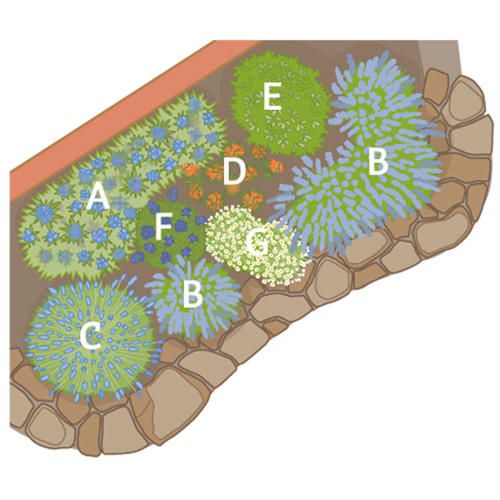 For example, adding vines, shrubs and very tall perennials to create an advantageous backdrop for a flower garden with a pulpit structure. We analyze and improve the background for island mixborders. The best background is foliage, preferably not ornamental, but neutral, with various shades.
For example, adding vines, shrubs and very tall perennials to create an advantageous backdrop for a flower garden with a pulpit structure. We analyze and improve the background for island mixborders. The best background is foliage, preferably not ornamental, but neutral, with various shades.
Working with the foreground of the flower garden: working out its contour, turns and corners, taking into account the space that will be required for plants that are carriers of the style, color, idea. For garden flower beds, it is important to achieve a clear contour; spots of foreground plants should not be small. It must be remembered that the smaller the plants, the more they are planted. A typical mistake when creating a more or less wide flower garden is the use of winter-green, but disproportionately small plants in the foreground - tenacious, soddy phlox, stonecrop, saxifrage, small primroses, thyme, etc.
Tall miscanthus are versatile plants in the background of a flower garden. Against their background, various combinations of plants of the middle and foreground look great. Beginning of August. Greenwood Park. Smolensk region.
Against their background, various combinations of plants of the middle and foreground look great. Beginning of August. Greenwood Park. Smolensk region.
An example of an island flower garden with correctly arranged height transitions. The flower garden looks voluminous, has a clear structure. August. Meshcher.
This example also shows that the angle of transition of the heights of the mixborder plants is quite sharp, which indicates the correct selection of heights. In the second half of summer, accent plants are veronicastrums, loosestrife, mullein, stonecrop. August. Smolensk region.
The front border of the flower bed should be clearly legible and decorative as long as possible. This is very important for cottage style gardens, especially if the owners live there all year round. Therefore, plants from different groups are used here - bulbous, coniferous, perennials of different flowering periods, annuals, roses of the corresponding groups, etc.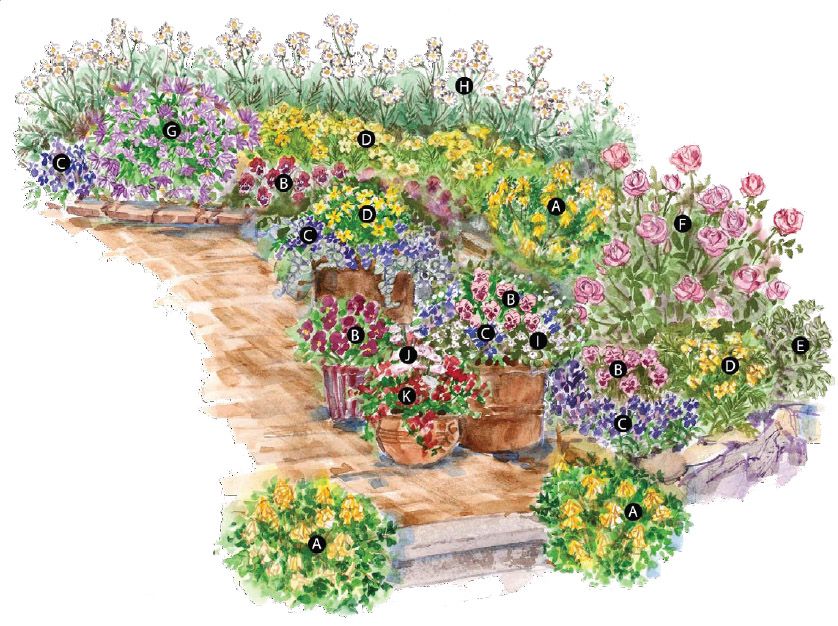 Garden of the second year of life. August.
Garden of the second year of life. August.
In conclusion, we analyze the resulting composition of plants in terms of flowering, color and other significant characteristics in order to achieve the goals. To do this, it is possible, and sometimes very useful, to build 2-4 plans. On them we hatch neutral and background plants that do not change during the season. For the rest, we paint over the groups blooming in a certain period with the appropriate tone, and check for compliance with the tasks set. For a flower garden of continuous flowering, you may have to build 4 plans - for May, June, mid-summer and late summer - early autumn. For a flower garden with maximum decorative effect, a 5th plan is added, reflecting the decorative effect of pre-winter, winter and early spring.
In order for the flower garden to look properly structured, perform its functions and be decorative until the calendar reconstruction (usually every six to eight years), it is necessary to choose the right distance between plants. Beginning of September. Greenwood Park. Smolensk region.
Beginning of September. Greenwood Park. Smolensk region.
In this flower garden, the designer incorrectly distributed the heights of plants and their locations. As a result, the stonecrop in the foreground "failed".
Inconsistency in the size and height of plants in a flower garden, perceived from a distance. A narrow strip of white Carpathian bluebell visually separates the edge of the flower bed from the plane of the lawn Photo at the top right.
The absence of a plant that determines the height of a flower garden destroys its structure. Photo right center.
Introduction to the composition of the plant in topiary haircut and veronicastrum with vertical inflorescences organizes the space of this part of the garden.
10 rules for creating a flower garden: how to avoid common mistakes
Flower beds are an important part of the image of the garden, they can help to express this or that style in landscape design.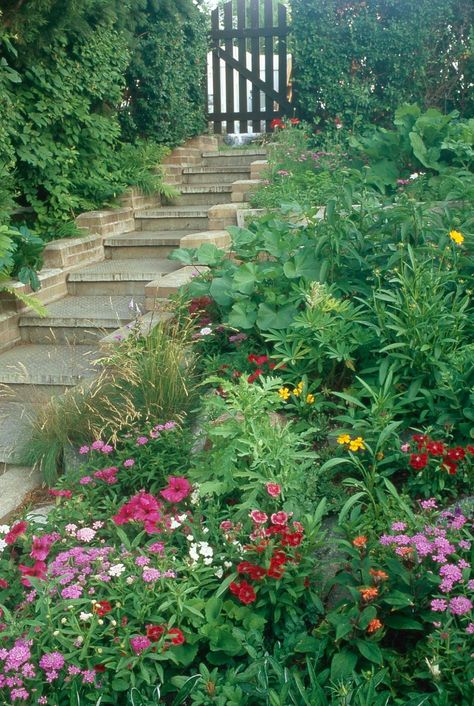 There are many options for floral design of a suburban area. The most interesting, but at the same time rather difficult way is to create a mixborder or flower garden.
There are many options for floral design of a suburban area. The most interesting, but at the same time rather difficult way is to create a mixborder or flower garden.
Flower beds | Petrovsky baroque
Regular garden flower beds are works of decorative art that reflect the aesthetic requirements of their time. They were complex compositions of various patterns, made of flowers growing freely in the ground, plants in flowerpots and tubs, green lawn and various decorative materials - multi-colored sand and broken glass, ceramics, tuff, shells.
In the system of regular gardens, which, according to their architectural design, were, as it were, a continuation of open-air palaces, with their green bersault corridors, with trellis pavilions-studies entwined with greenery, flower beds served as original carpets, multi-colored and varied.
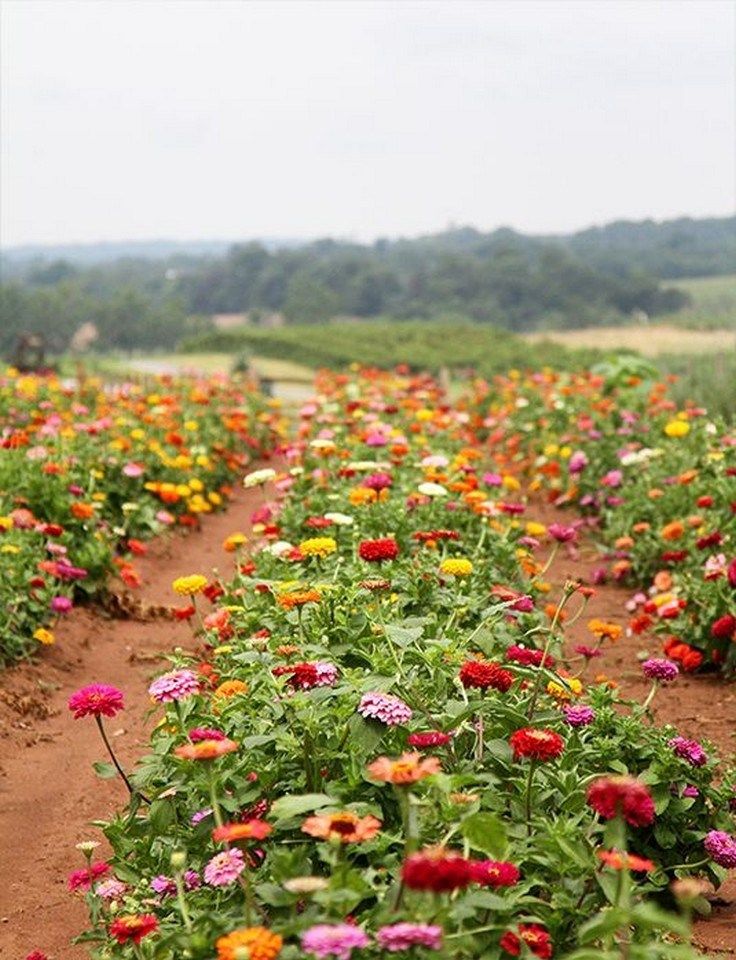 It is no coincidence that they were decorated with plants in flowerpots and tubs, mostly rare, greenhouses, which once again emphasized the "interior" nature of these gardens.
It is no coincidence that they were decorated with plants in flowerpots and tubs, mostly rare, greenhouses, which once again emphasized the "interior" nature of these gardens. Judging by European books and drawings of the late 17th - early 18th centuries, the flower gardens of regular gardens can be divided into two types.
One of them is the so-called "broderie" (or "parterre embroideries"), where flowers and plants were generally assigned a secondary role. A variety of decorative materials prevailed in them, which, together with the green lawn, often make up a very complex, whimsical pattern along the lines. In such a flower garden, plants placed in ceramic flowerpots or wooden tubs only complemented the composition. But even in such flower beds, planting with clipped greens (most often boxwood) was necessarily used. She also sometimes emphasized the main pattern, made with decorative materials and inside the flower garden.
Parterre embroidery in the Summer Garden
In the second type, the main role was played by flowers, which formed the main pattern along with areas of green lawn.
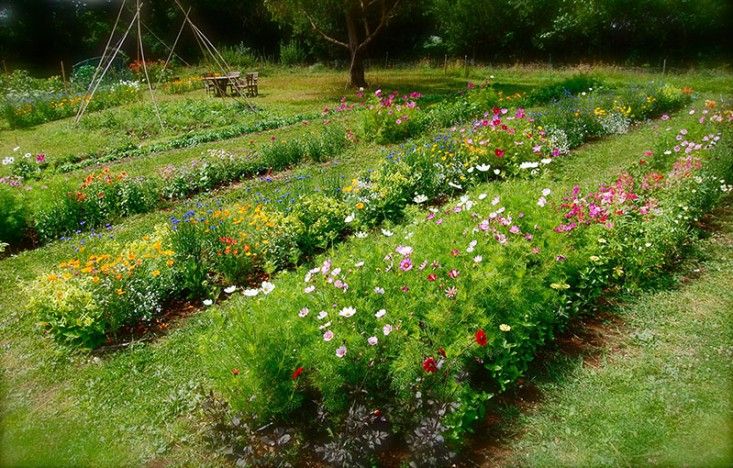 But even in these compositions, the pattern was emphasized and set off by lines of decorative materials, and individual plants (mainly greenhouses) were also present in flowerpots and tubs.
But even in these compositions, the pattern was emphasized and set off by lines of decorative materials, and individual plants (mainly greenhouses) were also present in flowerpots and tubs.
Land marking for a flower garden (designed by J.-B. Leblon)
Archival materials collected during the preparation of materials for a fragmentary reconstruction of the Summer and Monplaisir Gardens (the most characteristic gardens of Peter the Great's time) showed that in Russian regular gardens of the first quarter of the 18th century, flower beds of the second type prevailed, i.e. those where flowers played a leading role.
preserved a large number of documents indicating such a number of colors, roots, bulbs and seeds that were prescribed from the gardens of the Moscow Region and from abroad for new gardens, which even to assume the existence of “Broderi” with a small number of plants in these gardens is simply impossible. As for Monplaisir, there is a direct indication of Peter I in his own drawing, where the parterre is divided crosswise into four flower beds with the inscription: “
In these four squares, plant with a buxbom on the attached figure and so that it is besieged from the edges, and in the middle the earth would be left for flowers .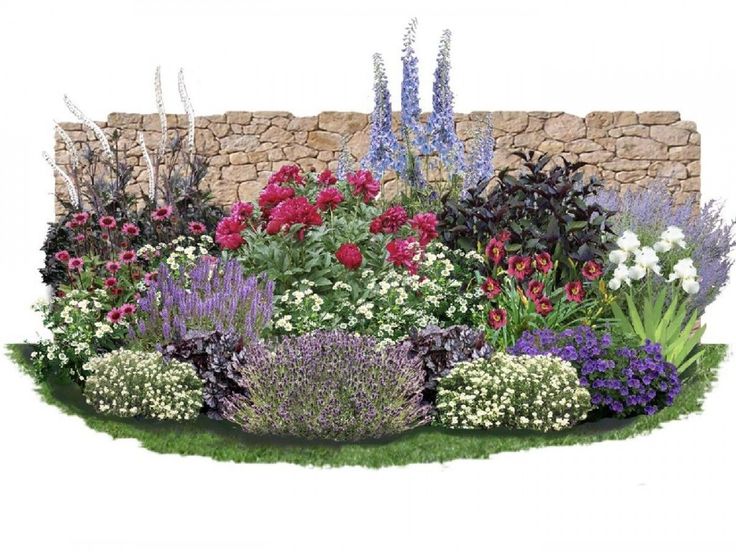 This indication immediately determines the nature of the flower garden.
This indication immediately determines the nature of the flower garden. The "attached figure", as shown by a comparison of the surviving plans of the Monplaisir Garden with engravings in the book of Leblon-D'Argenville, is the image of the flower garden on plate VI. The same page of the book was found separately in the TsGADA, in the Book of Buildings. This sheet has clearly been used. It is characteristic that from the page where three drawings are placed, this one was chosen, with an annotation - "floral" ("Pour des fleurs").
J.-B. Leblona
J.-B. Leblona
J.-B. Leblona
J.-B. Leblona
J.-B. Leblon
Considering the question of the flower gardens of the time of Peter the Great, it is necessary to single out the most characteristic type of stalls.
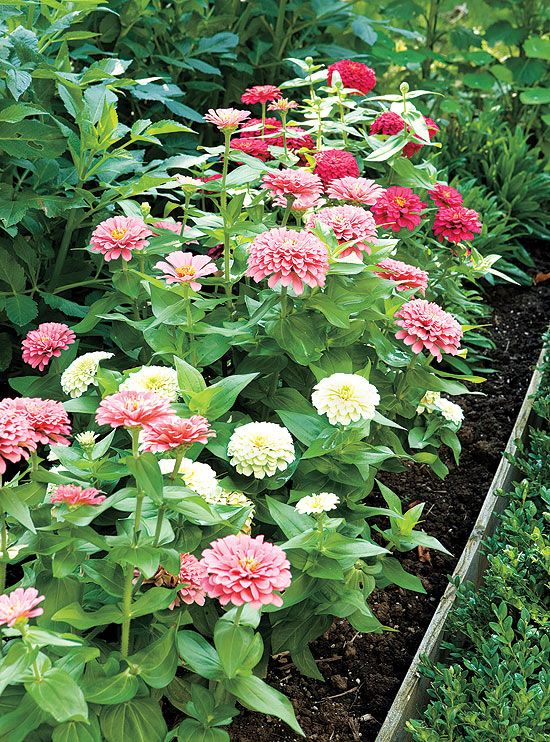 An analysis of the available materials shows that under Peter, stalls with a four-part division were preferred. This principle for Peter's time becomes almost standard. Such are the parterres of Yekaterinhof, Dubkov, the Monpdezir garden in Peterhof and, finally, the Summer Garden itself - on the same engraving by Zubov, where the four-part division of the parterre at the second Summer Palace is clearly visible. Flower beds, on the other hand, are usually a system of squares and rectangles, very regular, the simplest and most compact forms, without cut corners and roundings, which are so often found on the plans of European gardens.
An analysis of the available materials shows that under Peter, stalls with a four-part division were preferred. This principle for Peter's time becomes almost standard. Such are the parterres of Yekaterinhof, Dubkov, the Monpdezir garden in Peterhof and, finally, the Summer Garden itself - on the same engraving by Zubov, where the four-part division of the parterre at the second Summer Palace is clearly visible. Flower beds, on the other hand, are usually a system of squares and rectangles, very regular, the simplest and most compact forms, without cut corners and roundings, which are so often found on the plans of European gardens. In the arrangement of parterres and flower gardens in the time of Peter the Great, one can especially clearly feel the careful selection from the huge number of different samples that Peter saw with his own eyes and which were available in numerous editions, drawings, engravings and drawings collected in his library. It is also impossible not to notice that the drawings of stalls under Peter I were chosen the most simple and strict from the colossal variety of solutions that were offered by then known sources.
